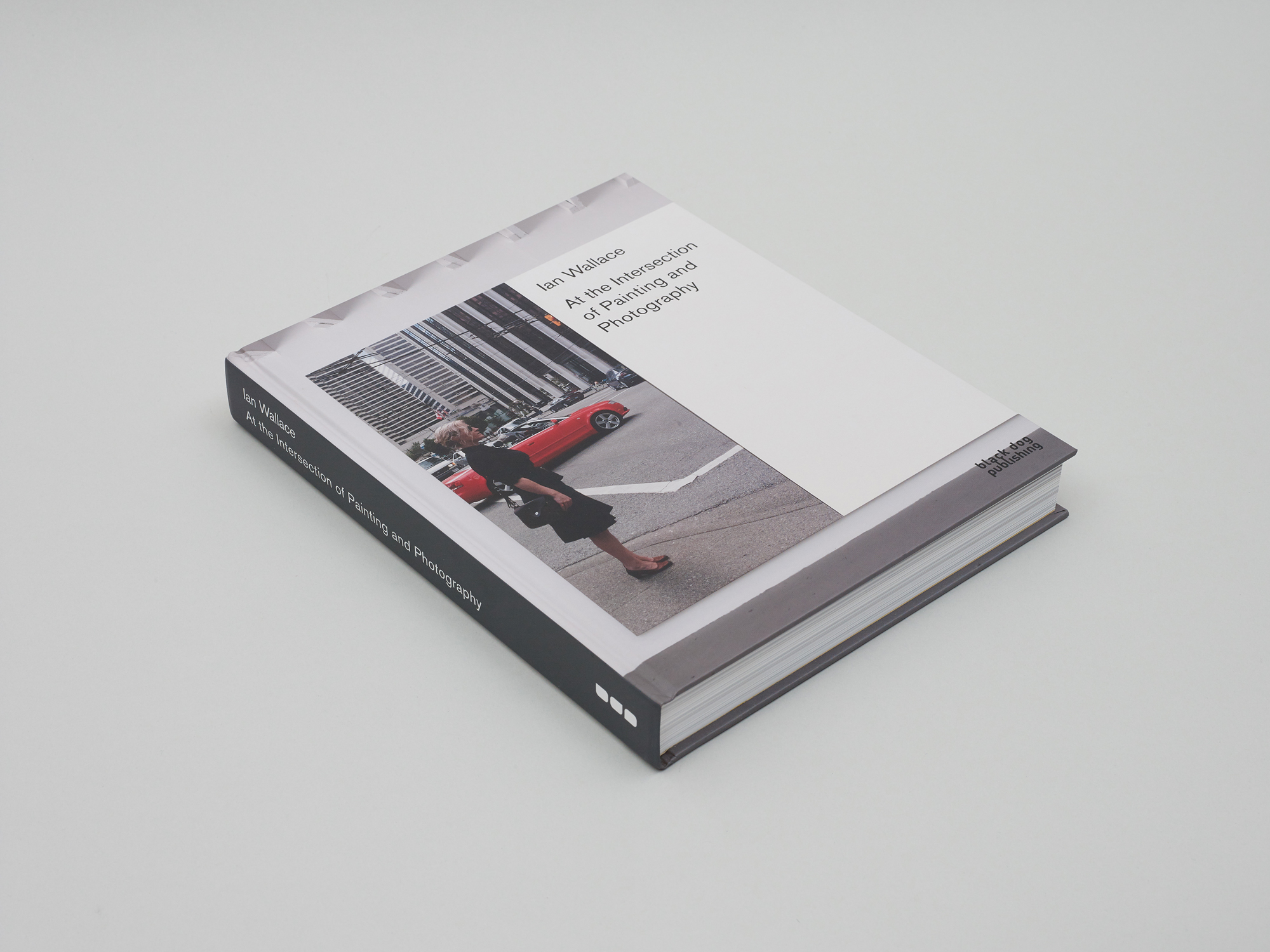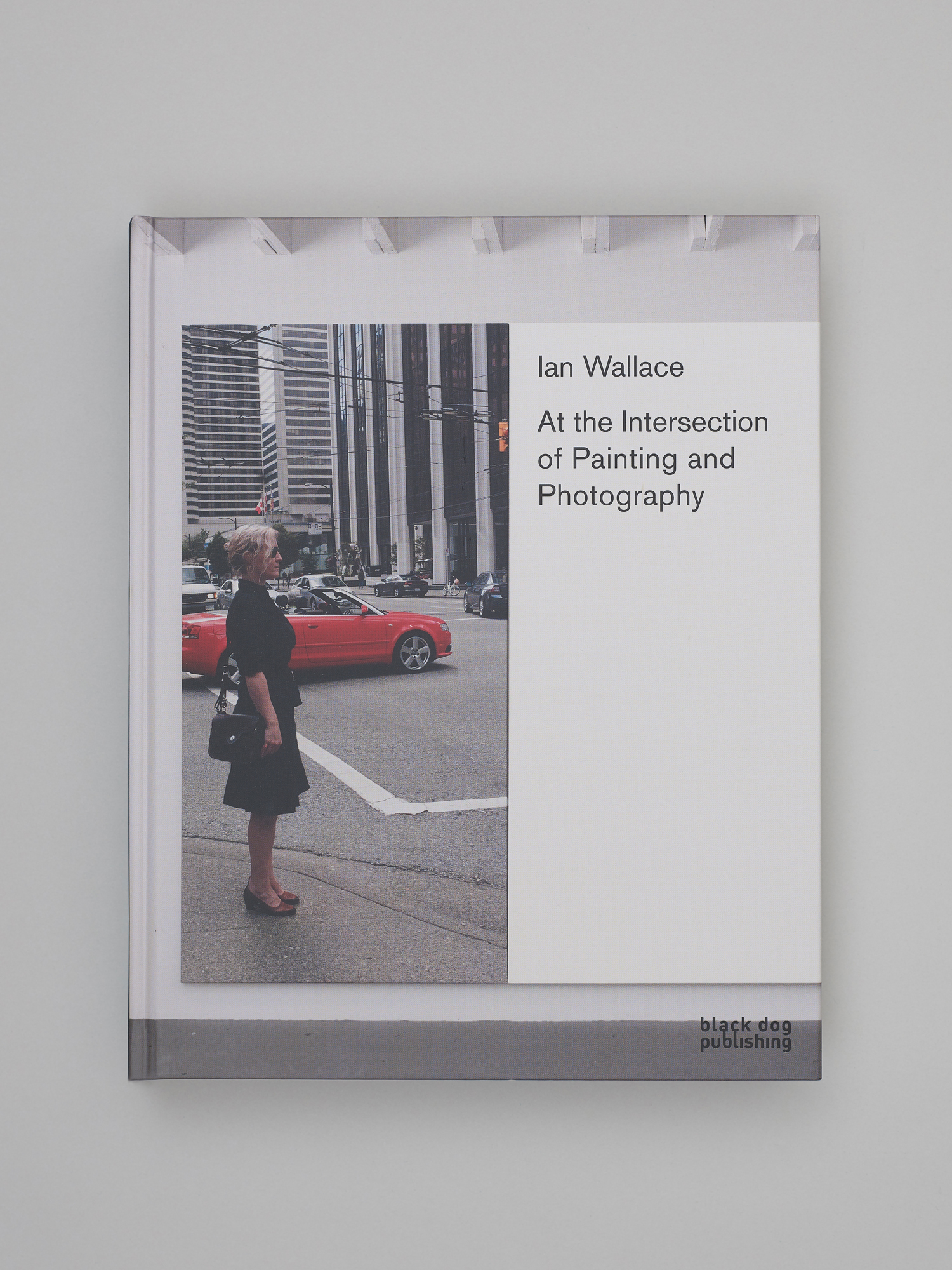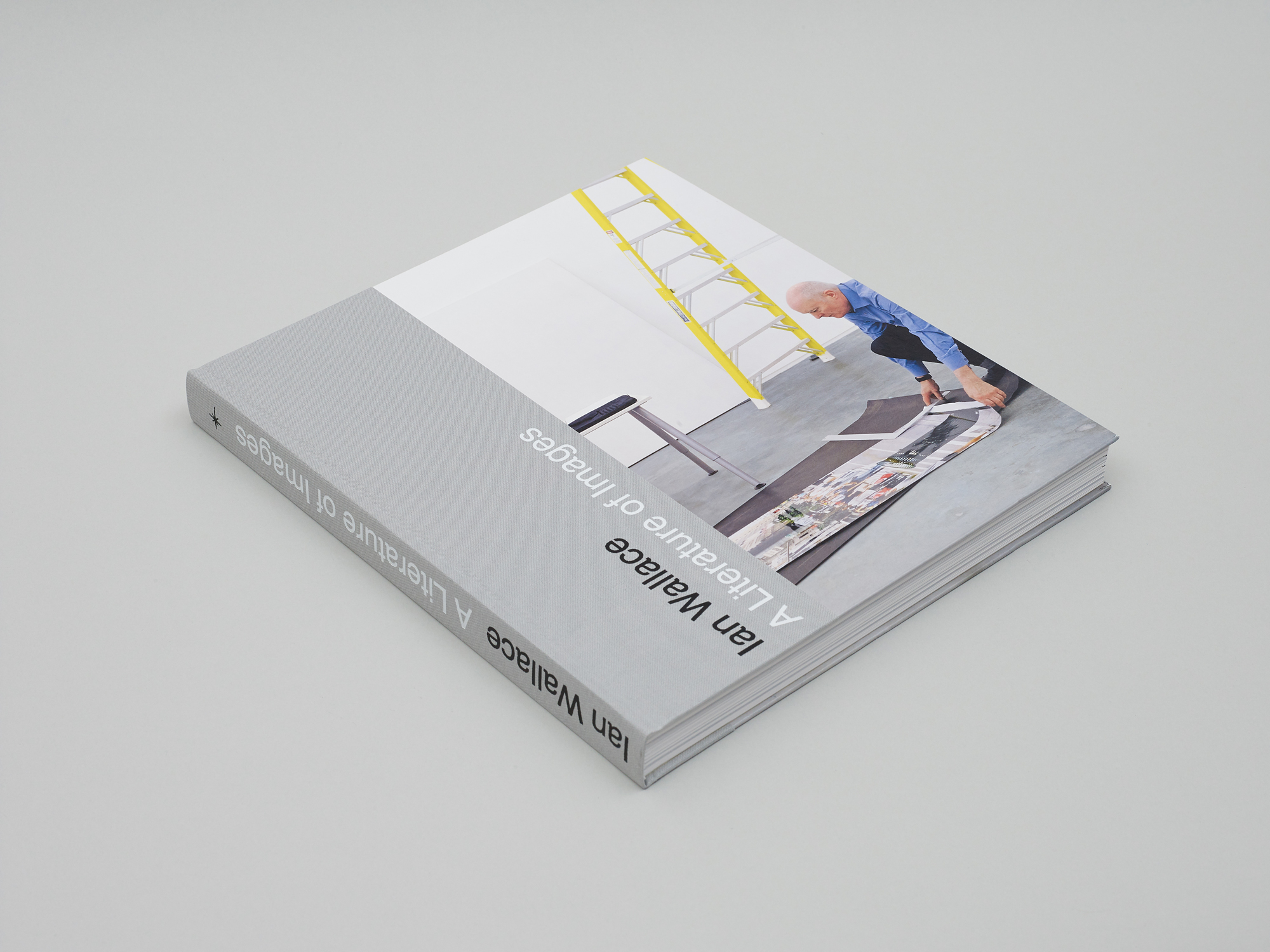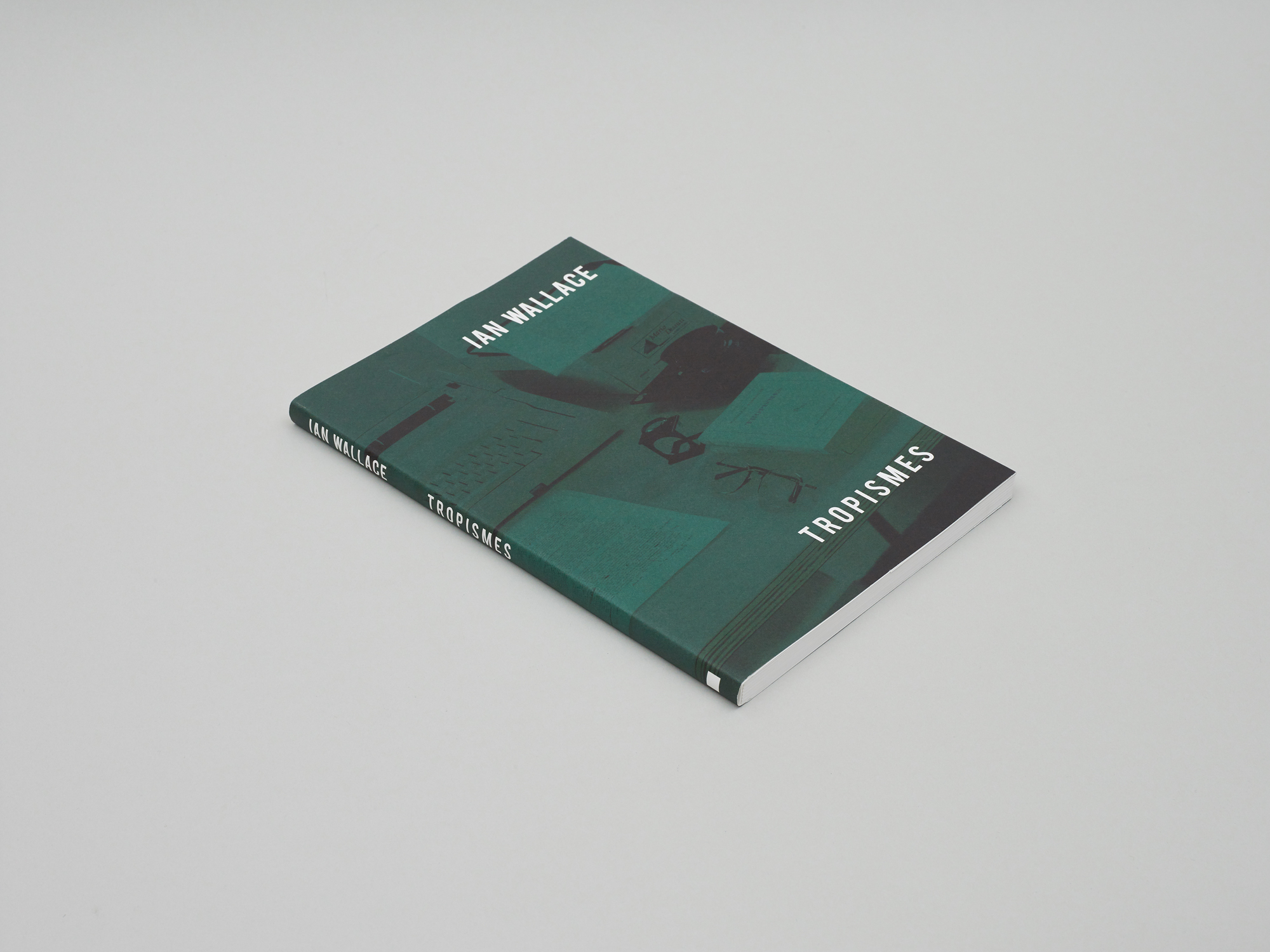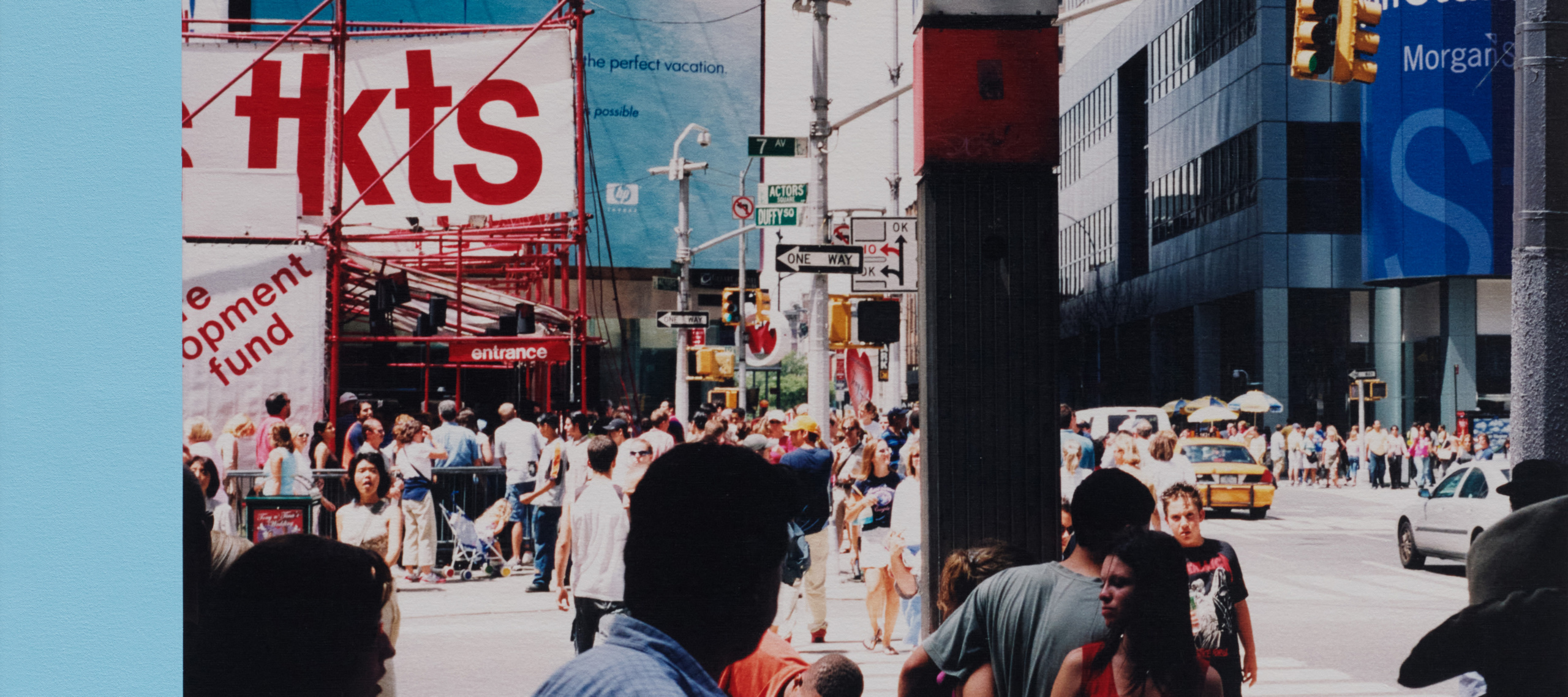
Ian Wallace, Intersection NYC (July 31, 2004) II ⏤ detail, 2004
Ian Wallace
In the Street
In the Street
February 7 – March 9, 2025
Ian Wallace (b. 1943 Shoreham, England) is a central figure in the development of conceptual art in Vancouver, a movement that has garnered international recognition since the early 1970s. Alongside artists such as Rodney Graham, Ken Lum and Jeff Wall, he has played a formative role in shaping the city’s distinctive approach to photo-conceptualism. His career began in the mid 1960s when he accepted a professorship at the University of British Columbia, where he would go on to influence a generation of artists, including Jeff Wall. Balancing his academic career with his artistic practice, Wallace continued to teach until the late 1990s while simultaneously refining a visual language that integrates the formalism of monochrome painting with the indexicality of documentary photography. His sustained engagement with avant-garde strategies, particularly those emerging from modernist and conceptual traditions, underscores his critical contribution to the contemporary art discourse.
Ian Wallace’s In the Street series (1988–1989) represents a pivotal development in his sustained engagement with the visual, social, and theoretical dimensions of urban space. As a key figure in the development of photo-conceptualism in Canada, Wallace has consistently examined the intersection of painting and photography, bringing theoretical strategies to bear on questions of representation, spectatorship, and modernity. This series extends and refines the critical concerns first articulated in earlier works such as the Poverty series (early 1980s), while also marking an important moment of international recognition with Wallace’s first solo exhibition with Greta Meert in Brussels in 1989, ushering in the gallery’s second year.
Ian Wallace’s In the Street series (1988–1989) represents a pivotal development in his sustained engagement with the visual, social, and theoretical dimensions of urban space. As a key figure in the development of photo-conceptualism in Canada, Wallace has consistently examined the intersection of painting and photography, bringing theoretical strategies to bear on questions of representation, spectatorship, and modernity. This series extends and refines the critical concerns first articulated in earlier works such as the Poverty series (early 1980s), while also marking an important moment of international recognition with Wallace’s first solo exhibition with Greta Meert in Brussels in 1989, ushering in the gallery’s second year.
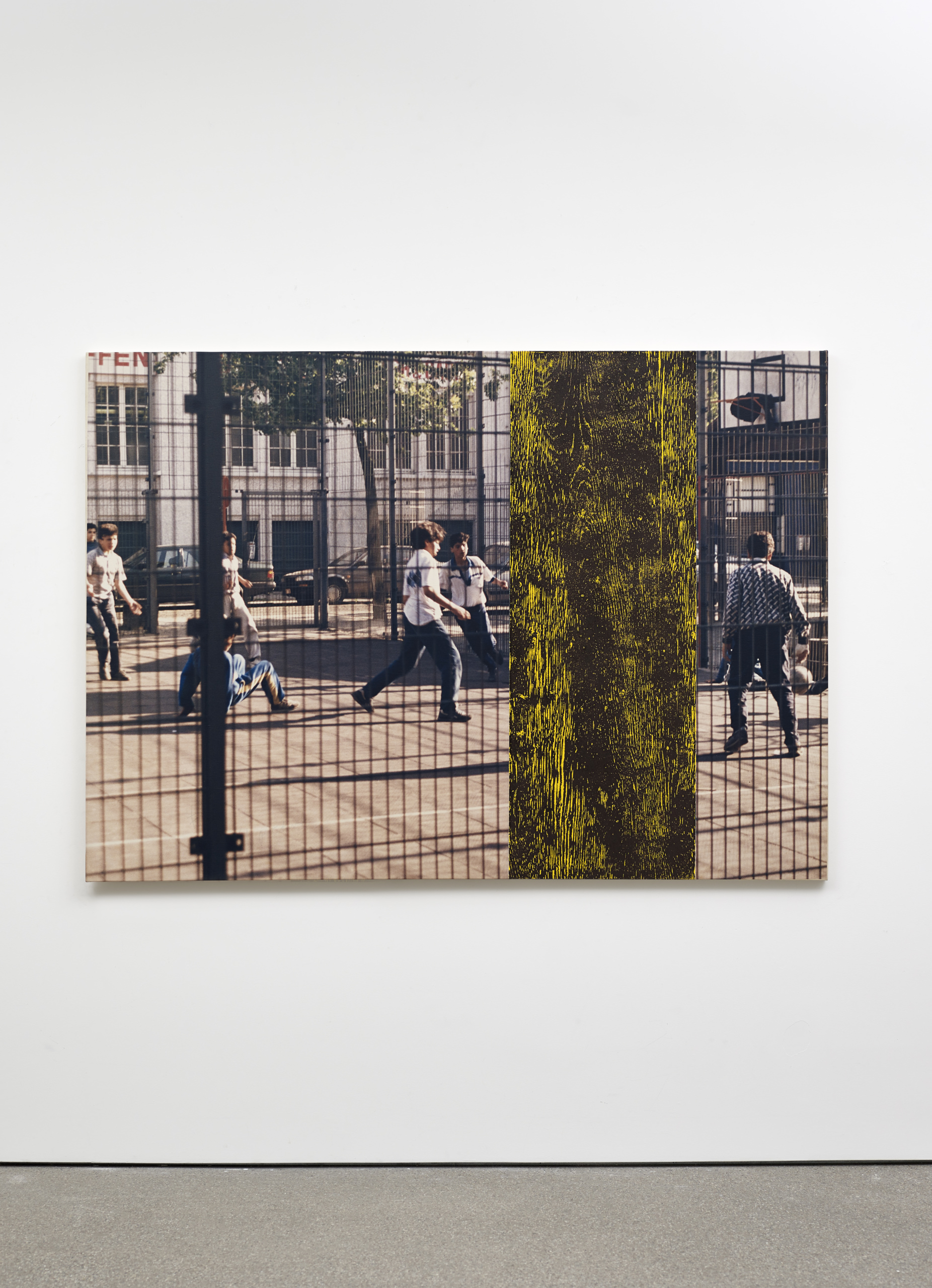
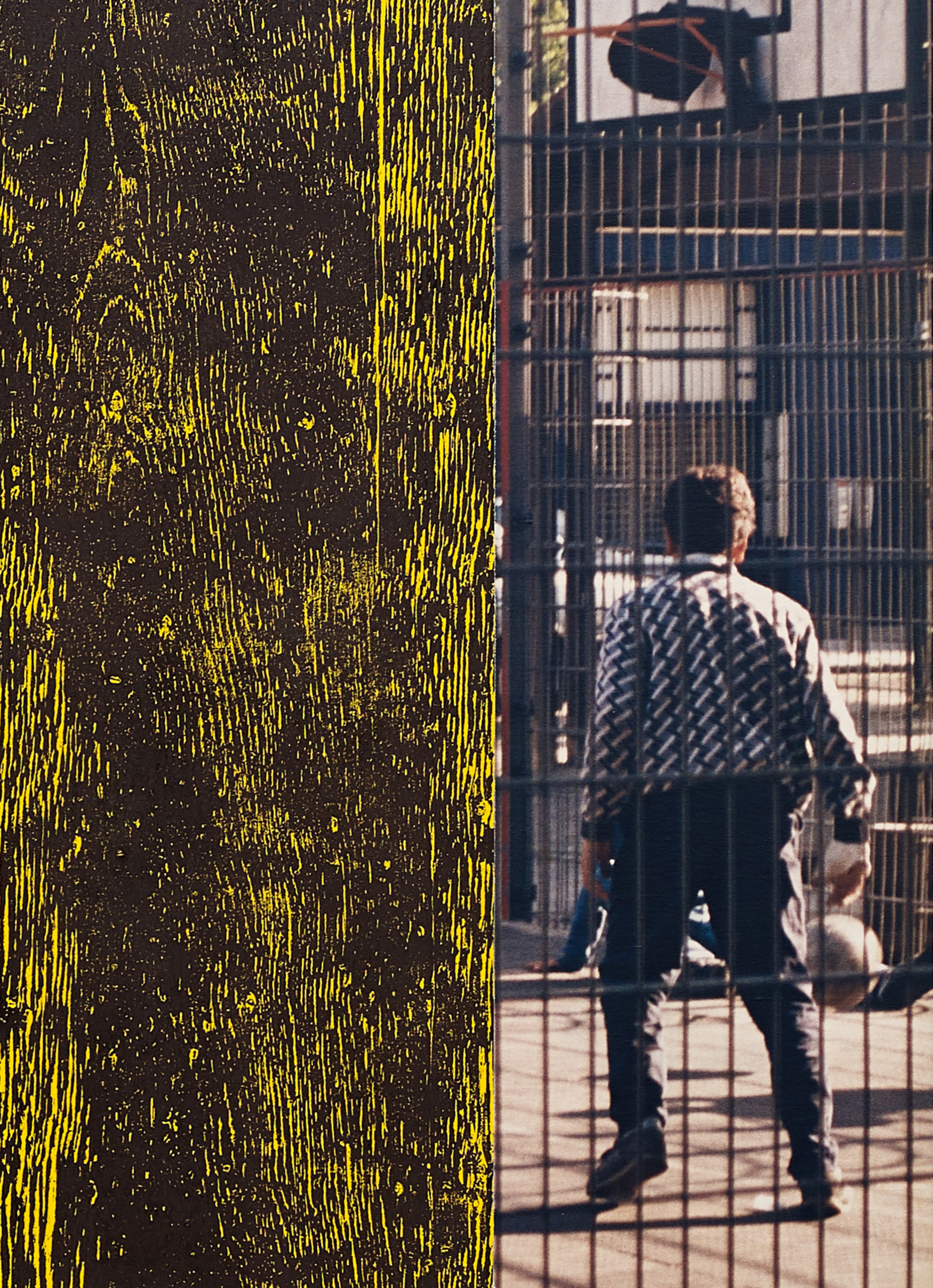
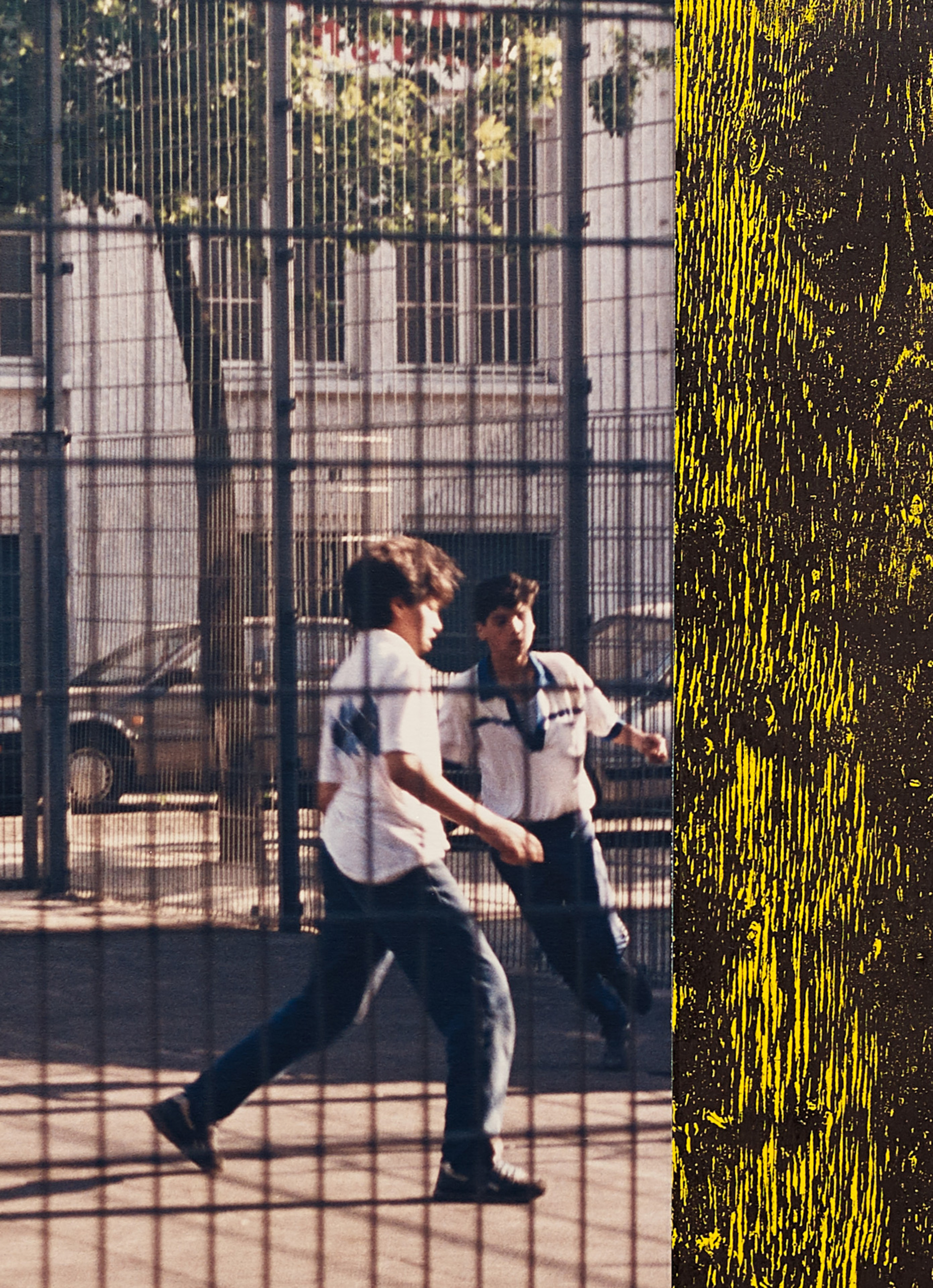
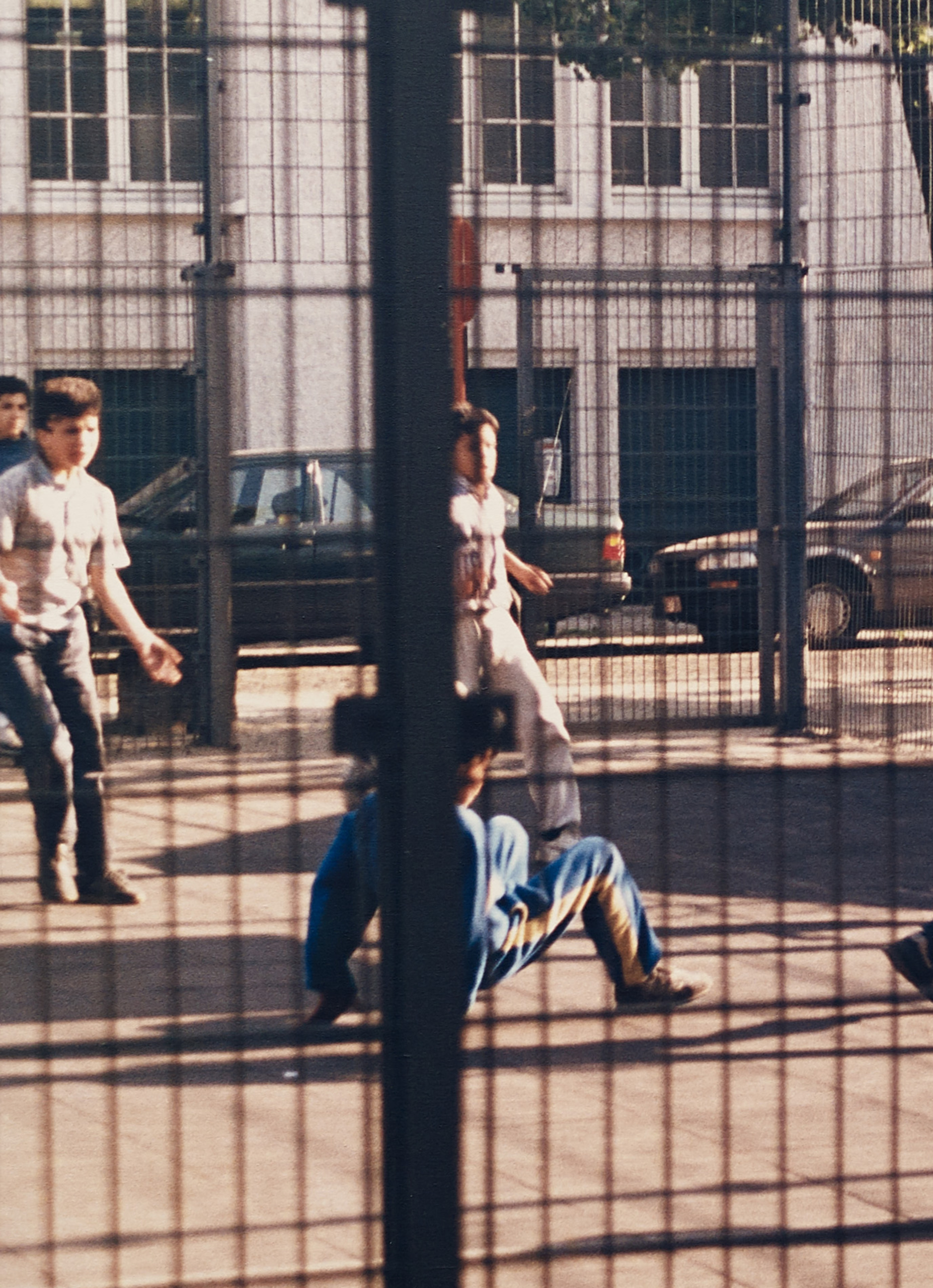
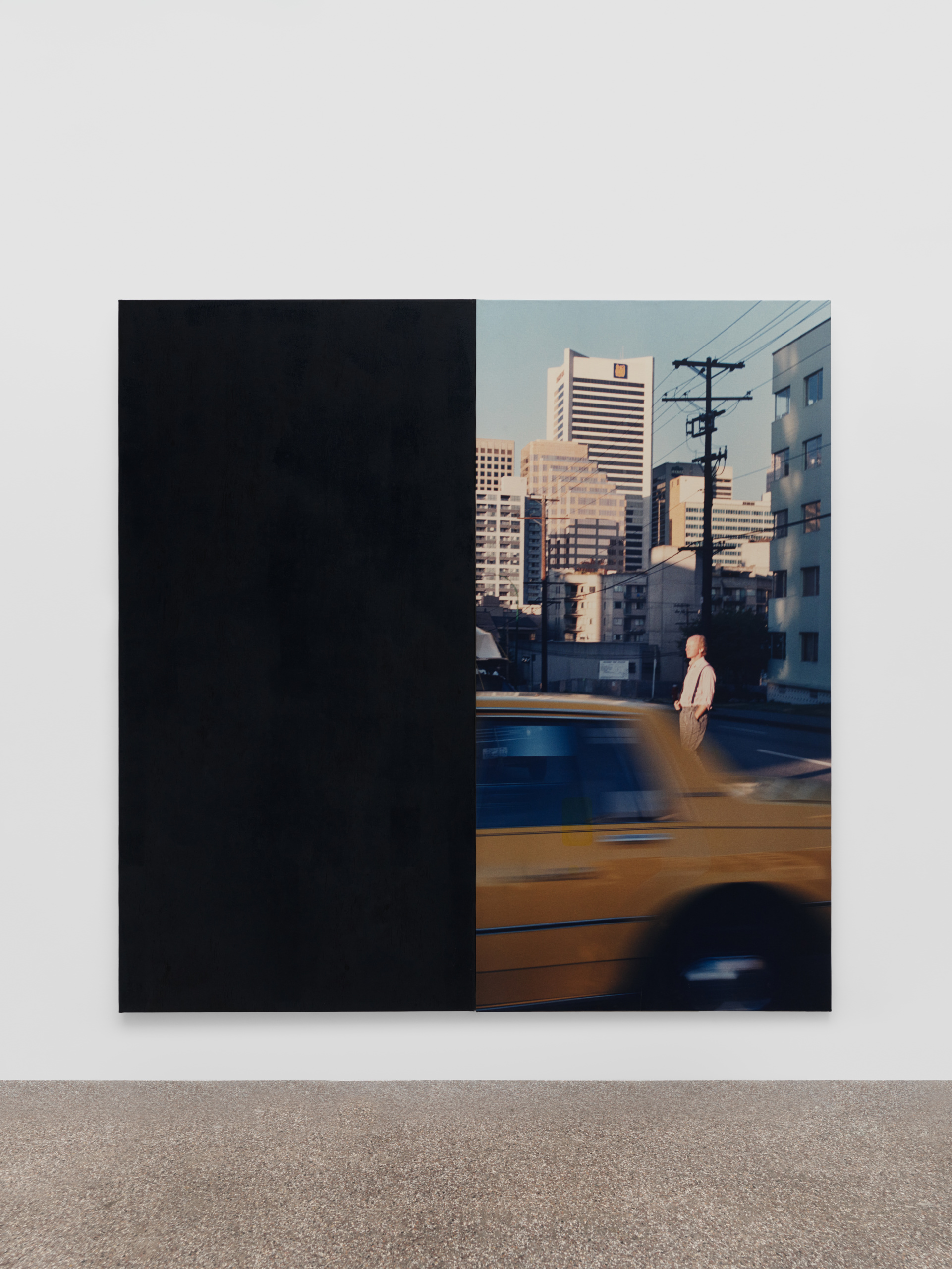
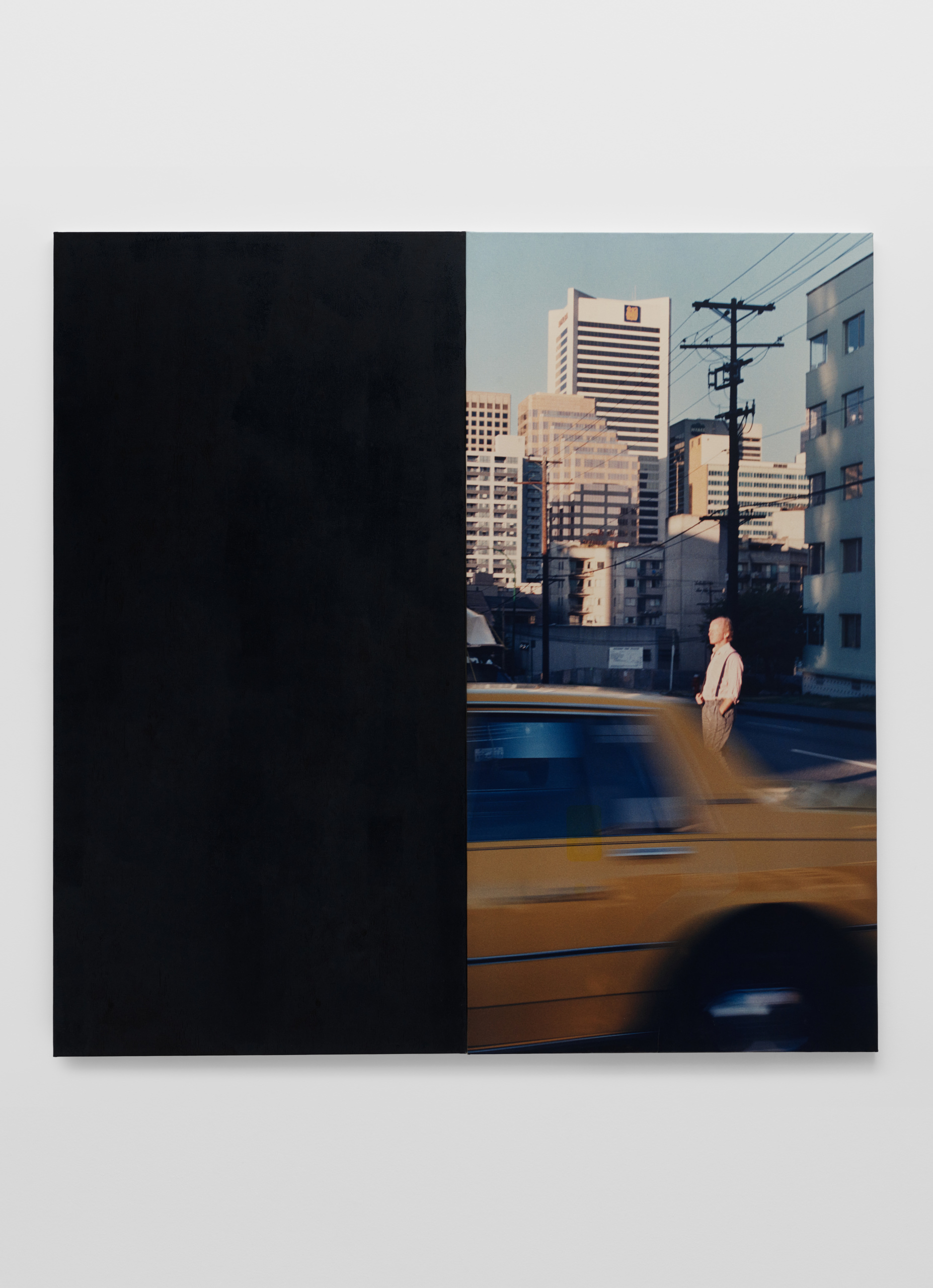
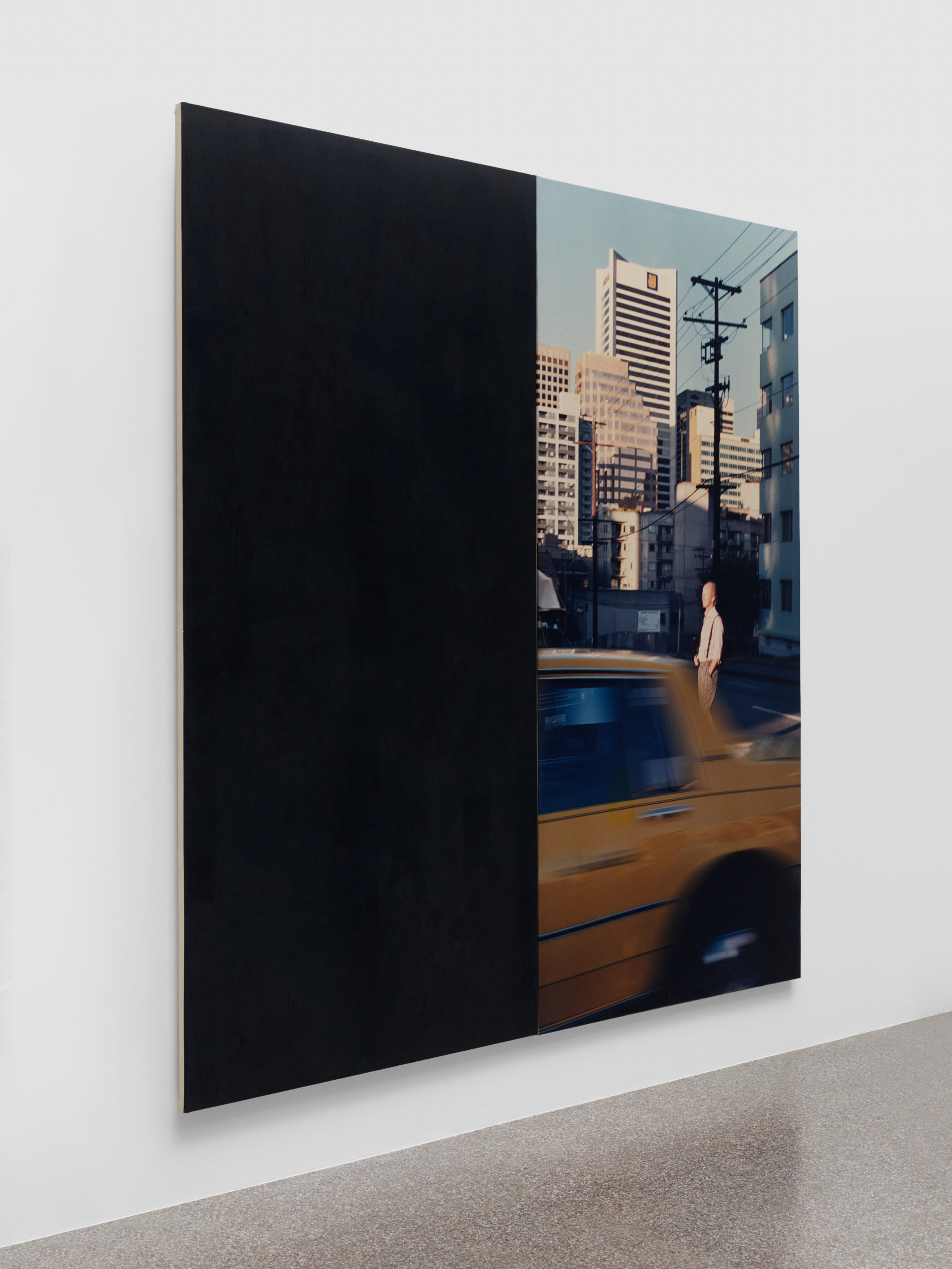
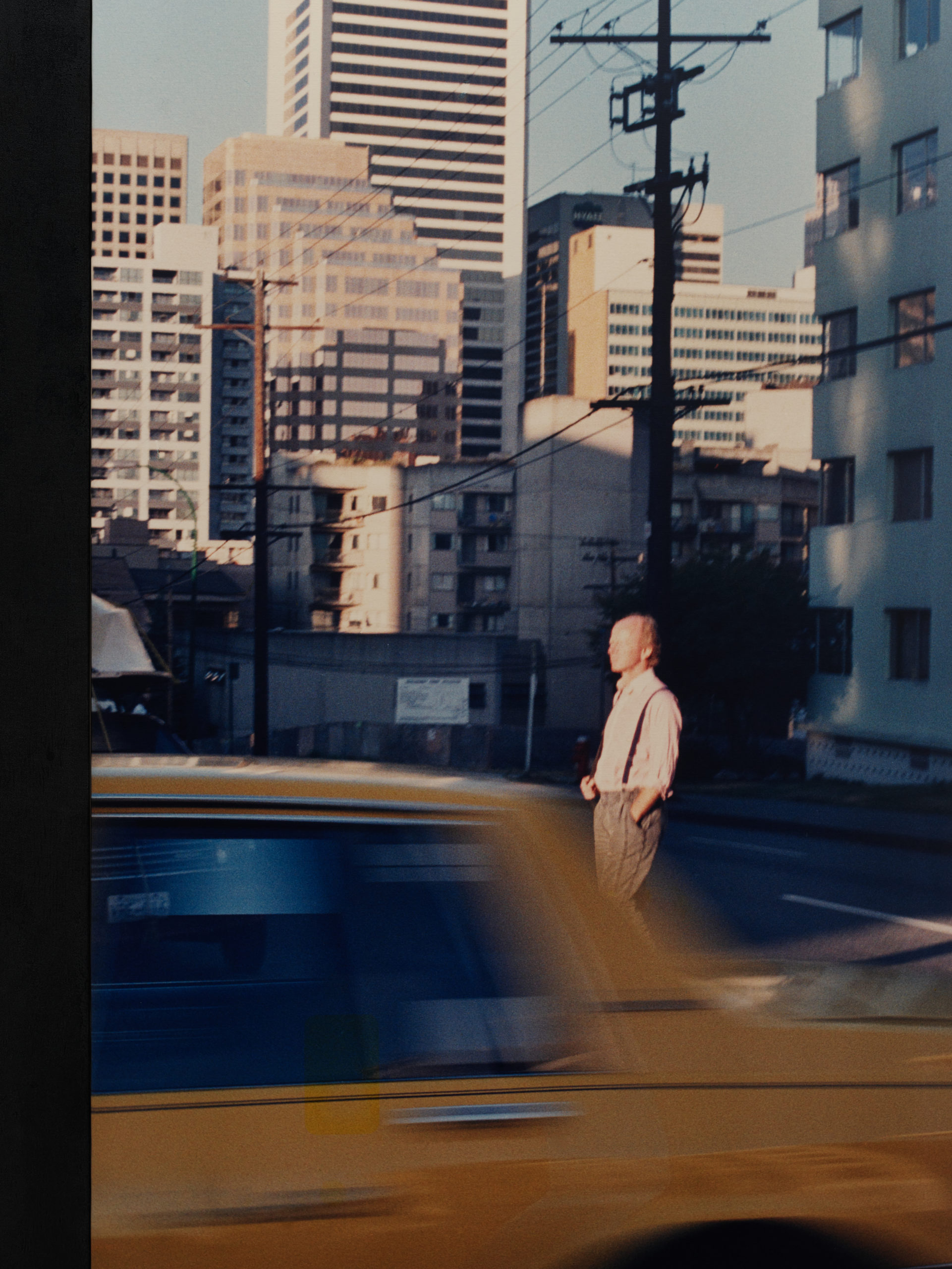
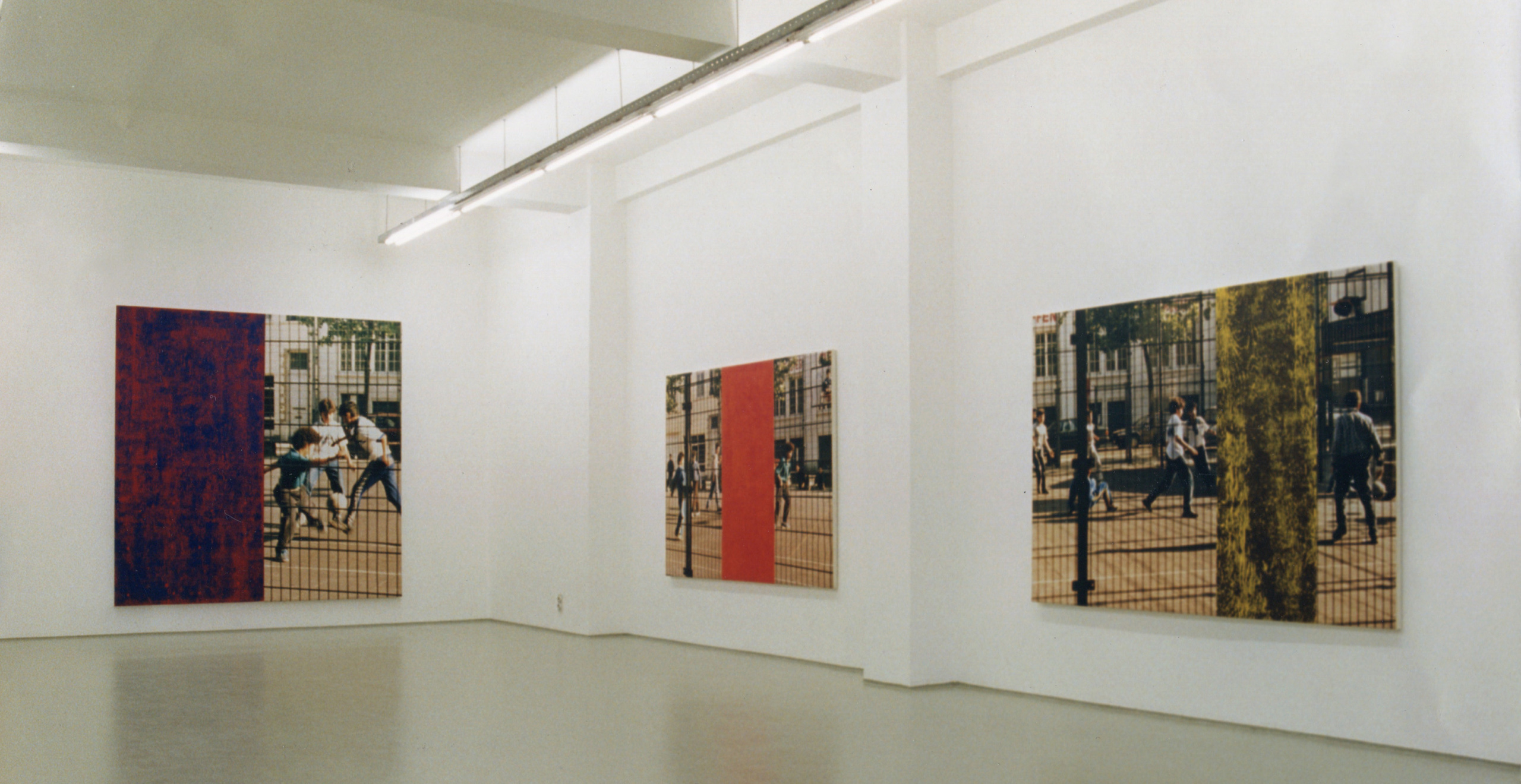
Installation view, Galerie Greta Meert, 1989
This period also marks Wallace’s deepening engagement with European urban space, particularly in relation to his first exhibition at Galerie Greta Meert, where he presented the Brussels Series (1989). Whereas this series responded to the layered historical and architectural character of the European city, In the Street takes a broader, more universal approach to the urban environment, treating the street as an archetypal site of modern experience. By juxtaposing moments of quotidian life with abstract painted elements, Wallace produces a dialectic between realism and formalism, documentary and abstraction, an approach that aligns his work with both modernist strategies and conceptualist critiques of representation.
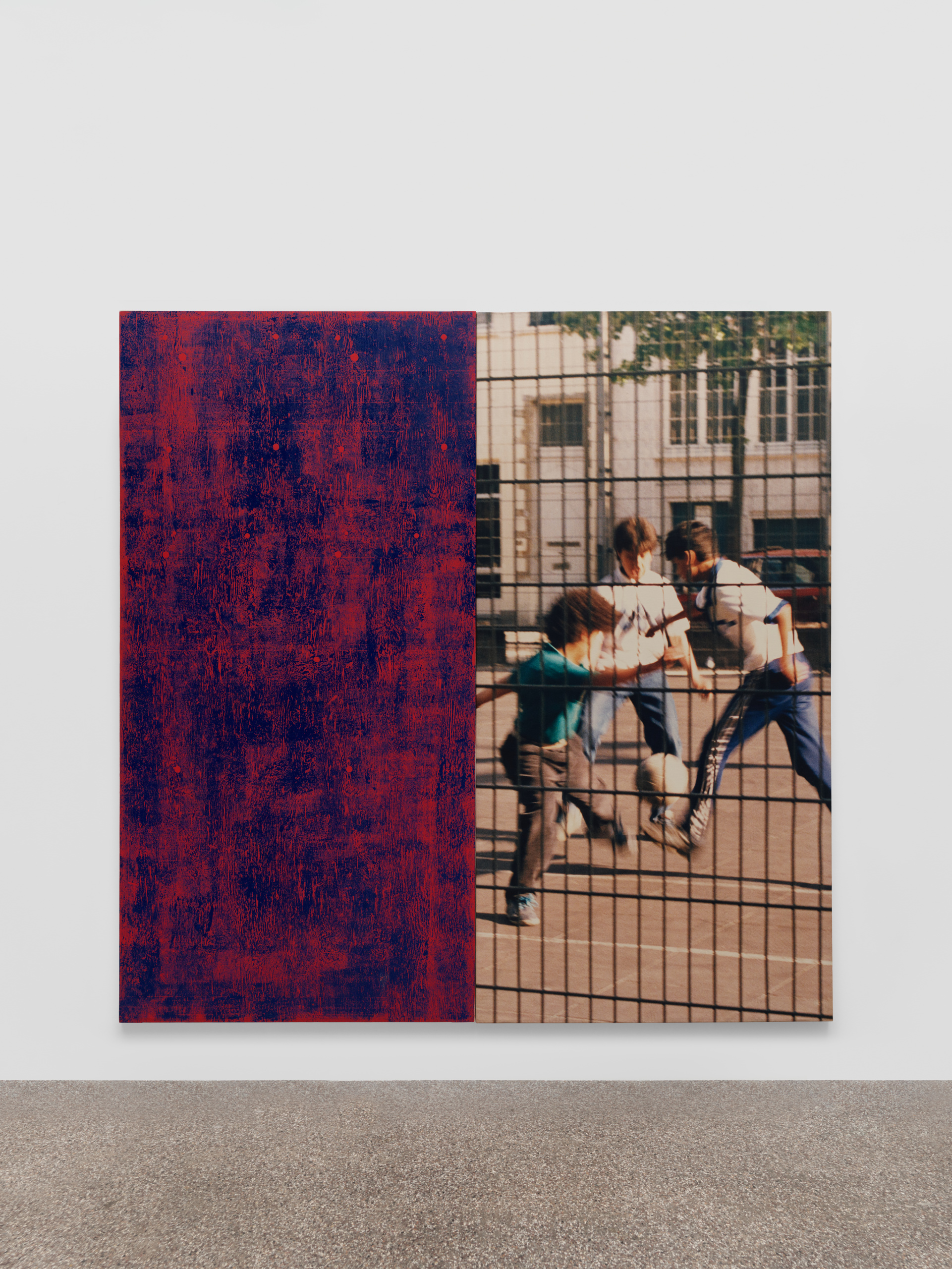
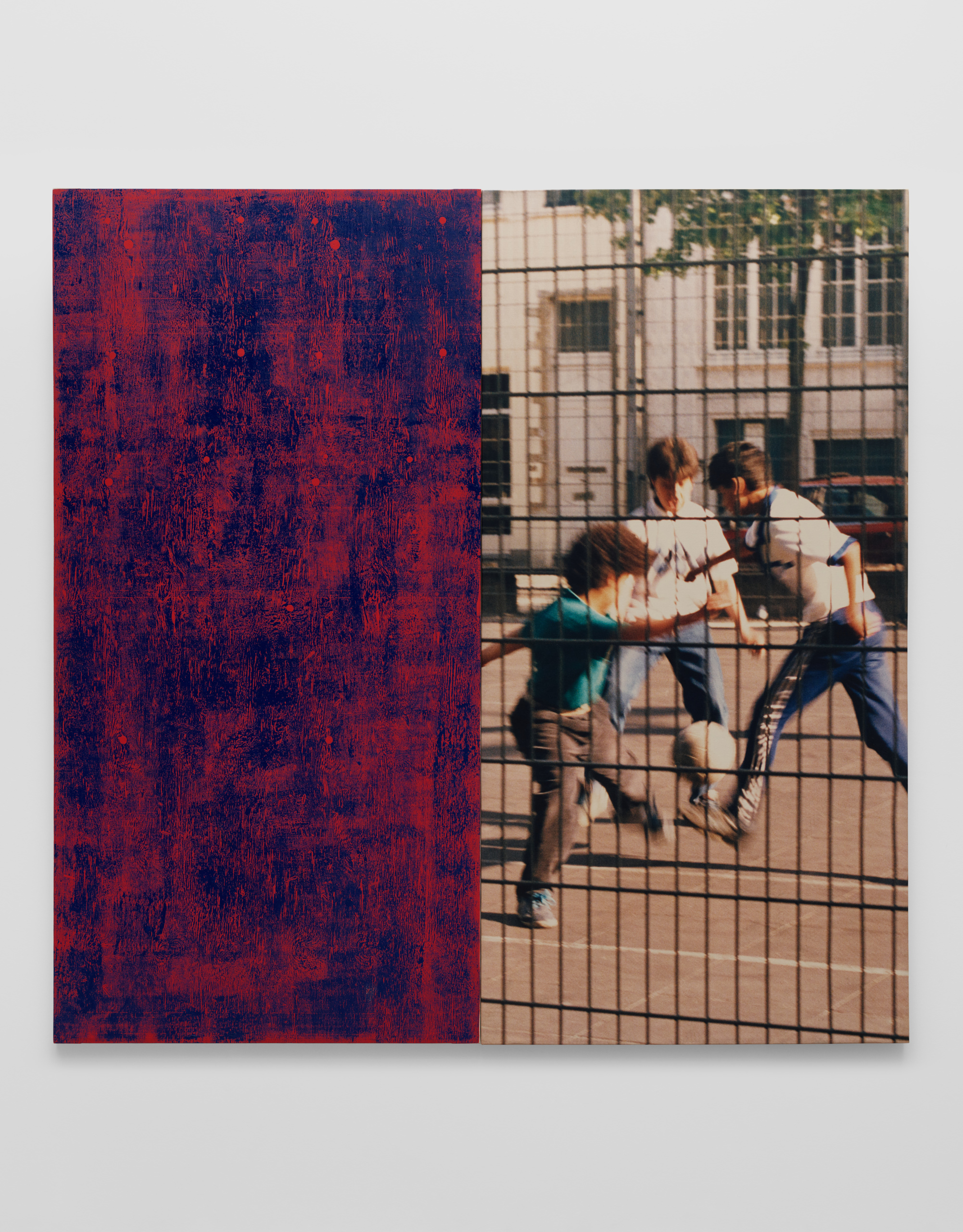
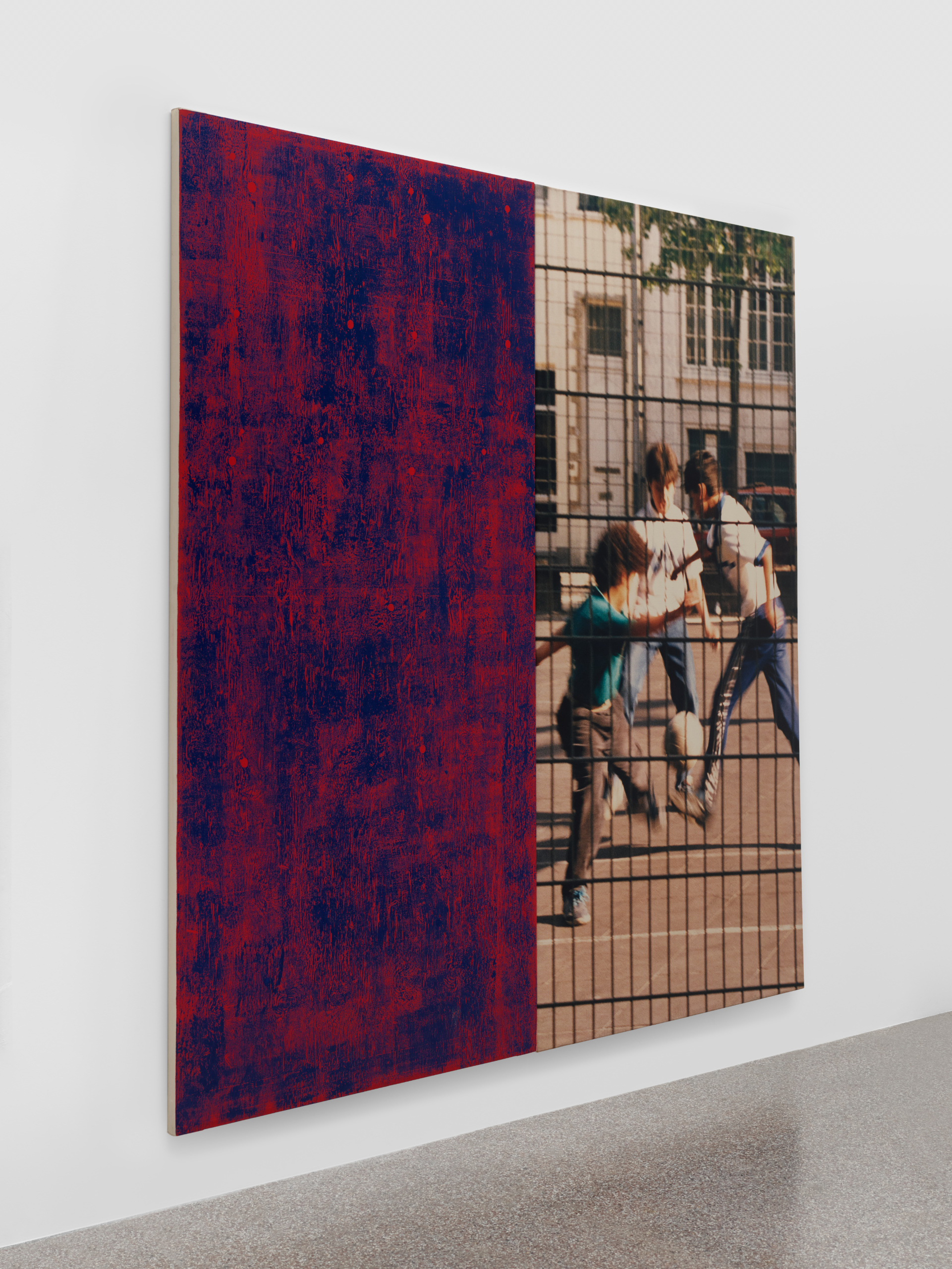
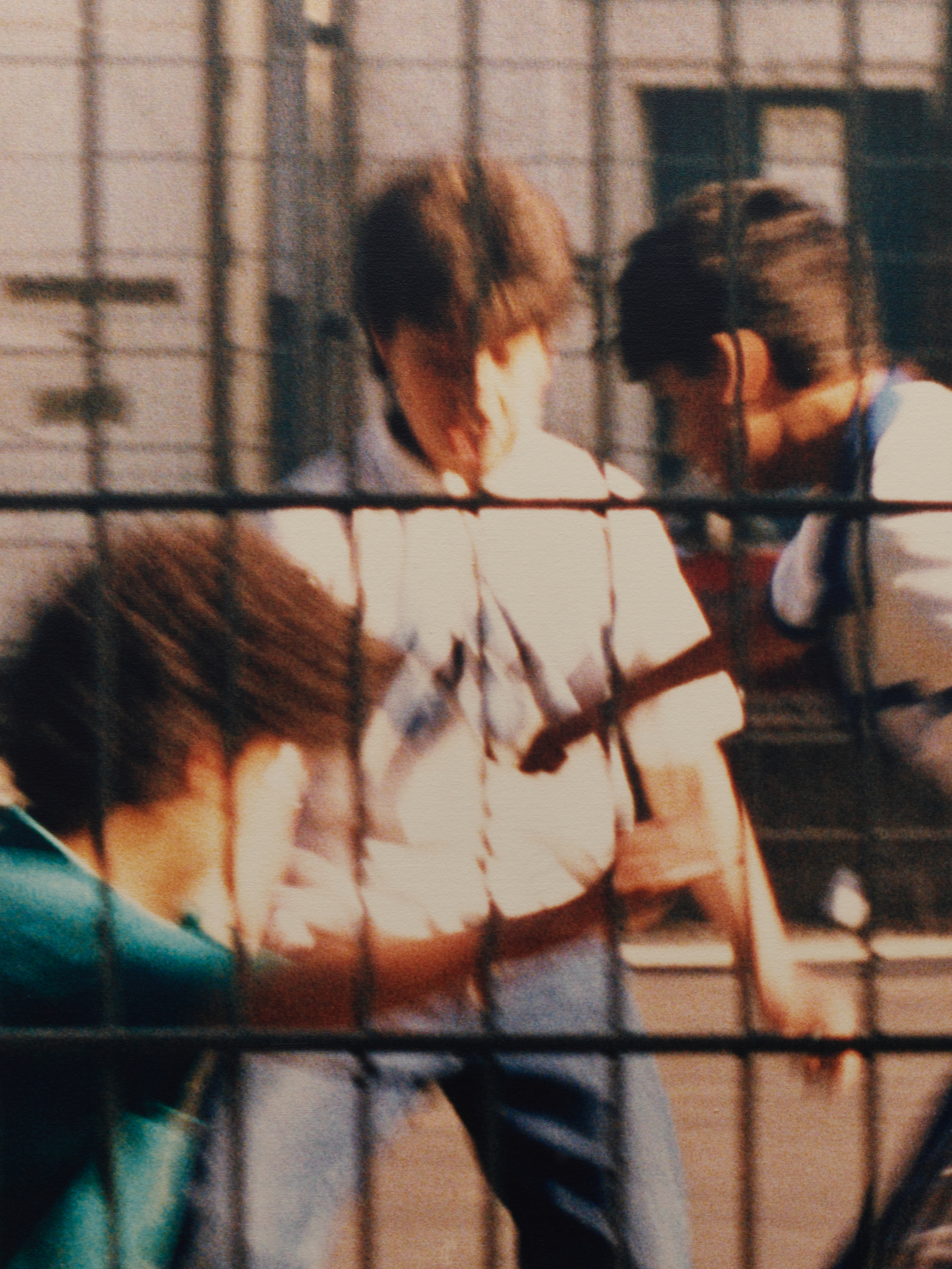
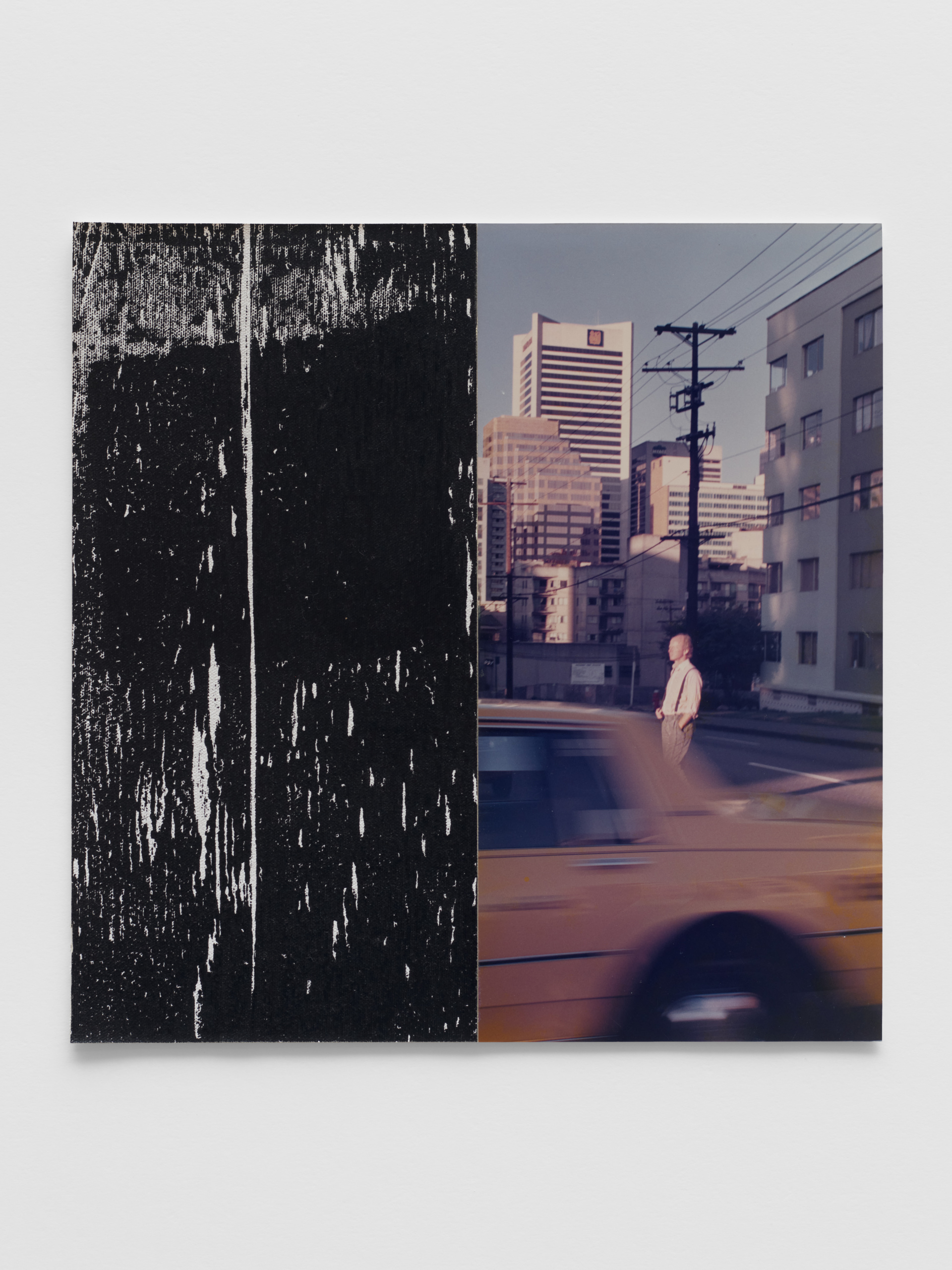
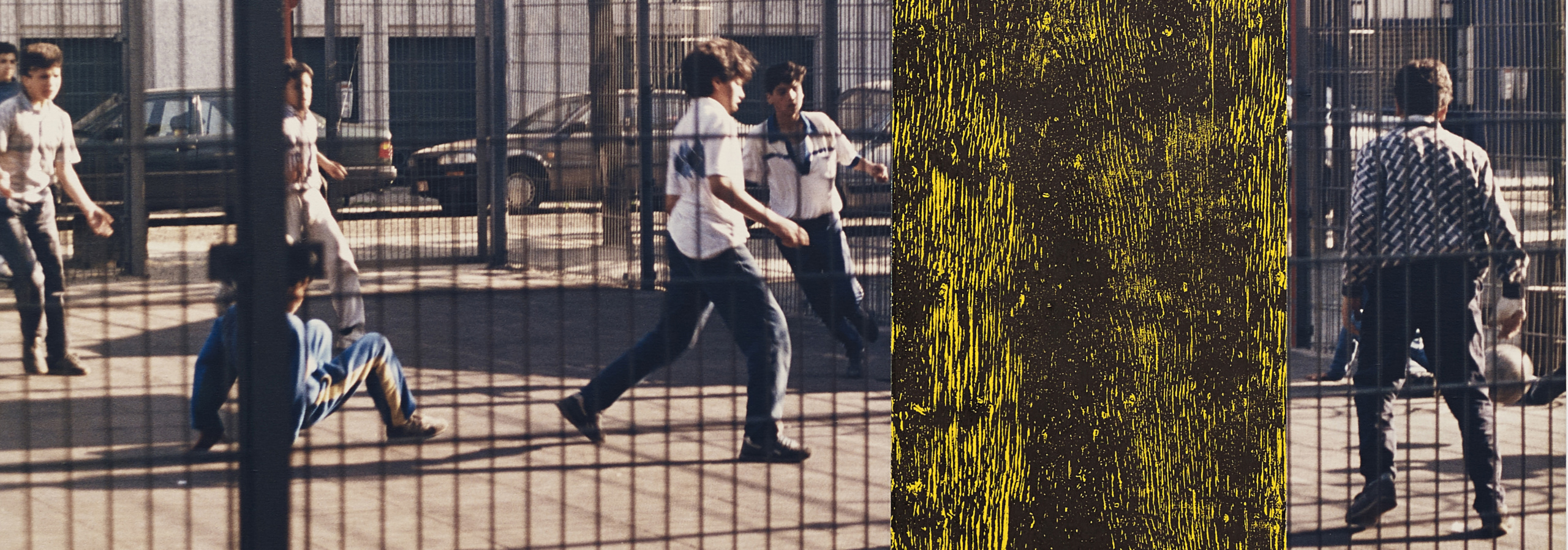
Ian Wallace, In the Street (Brussels series) ⏤ detail, 1988
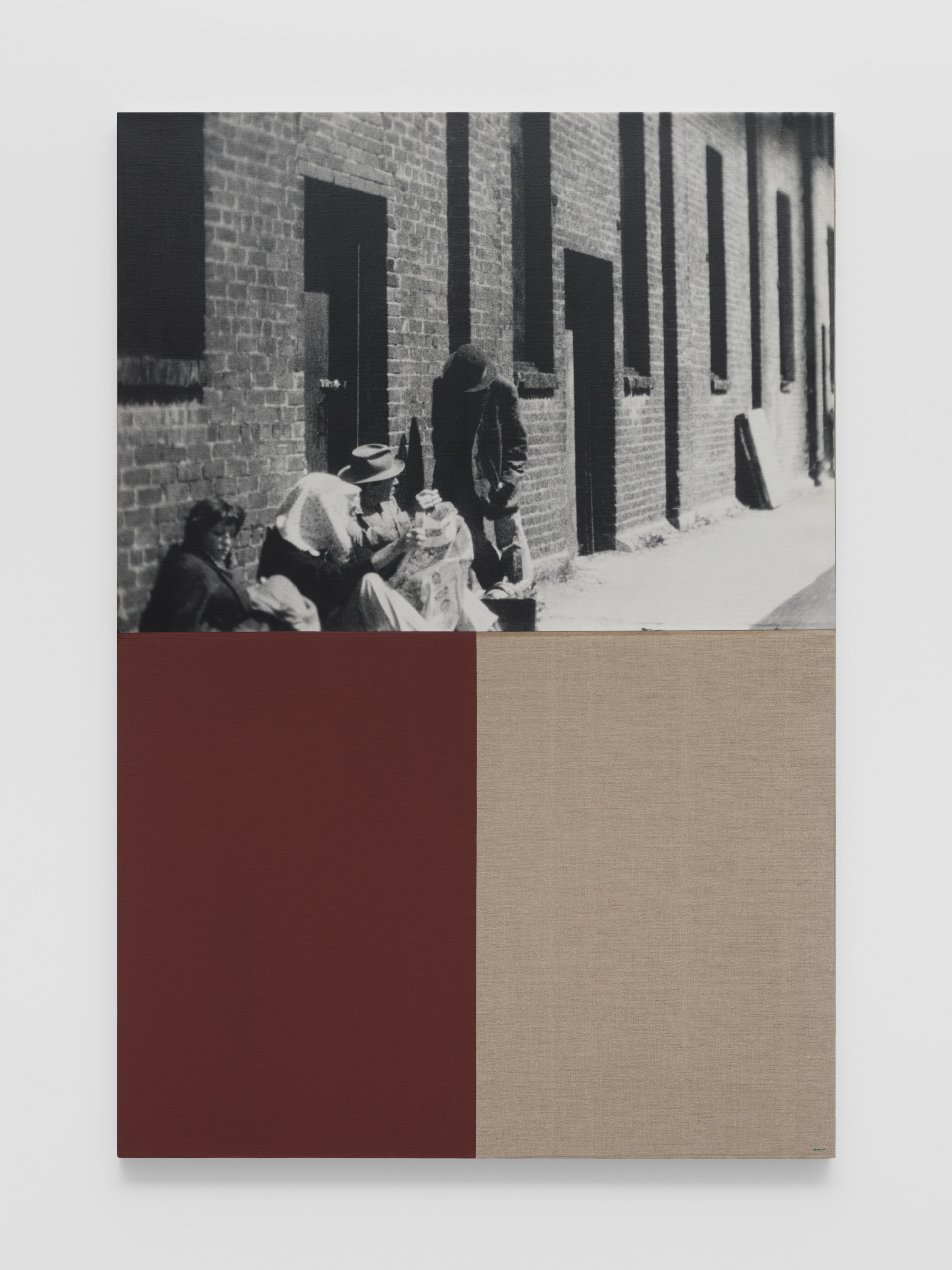
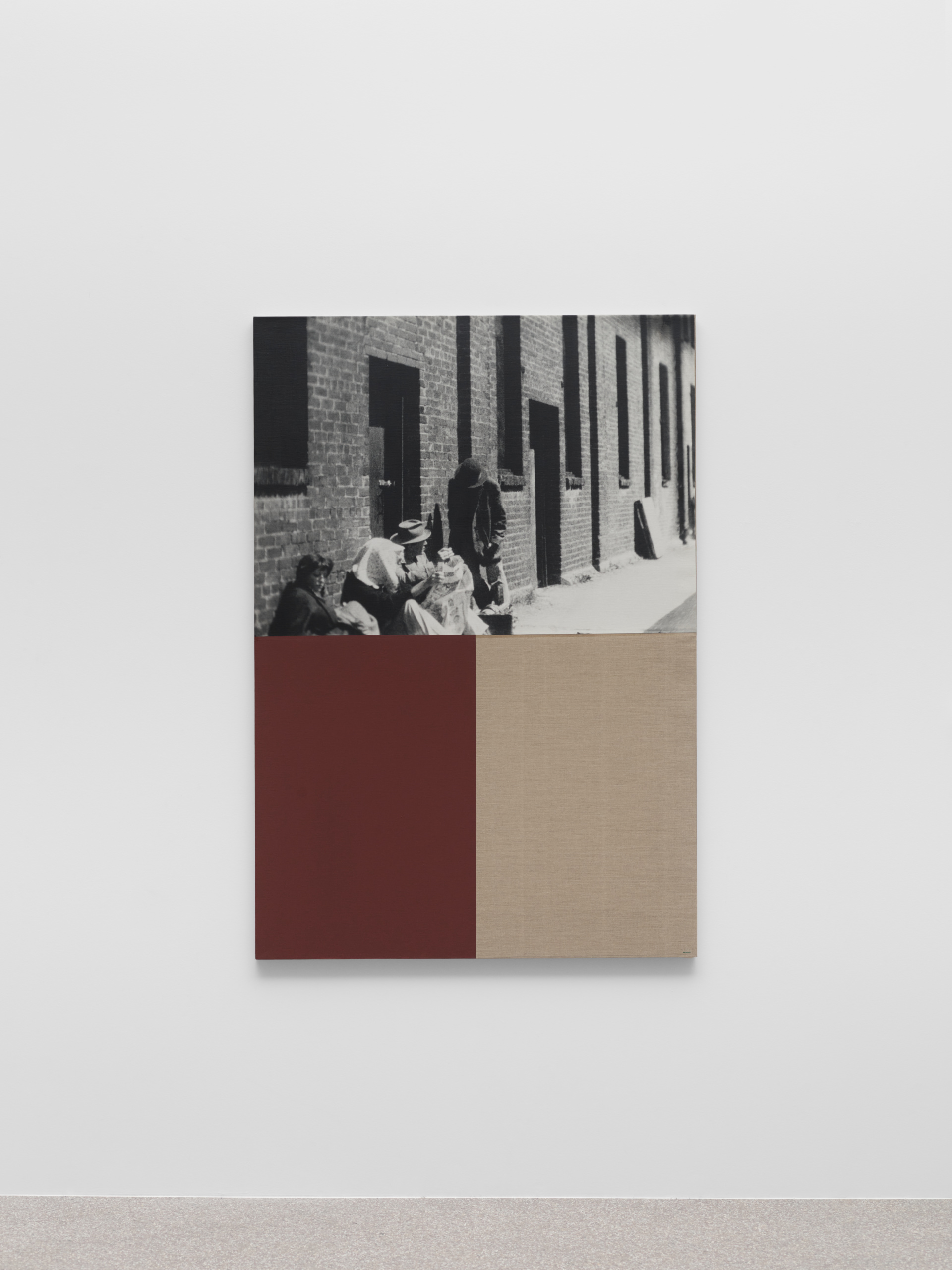
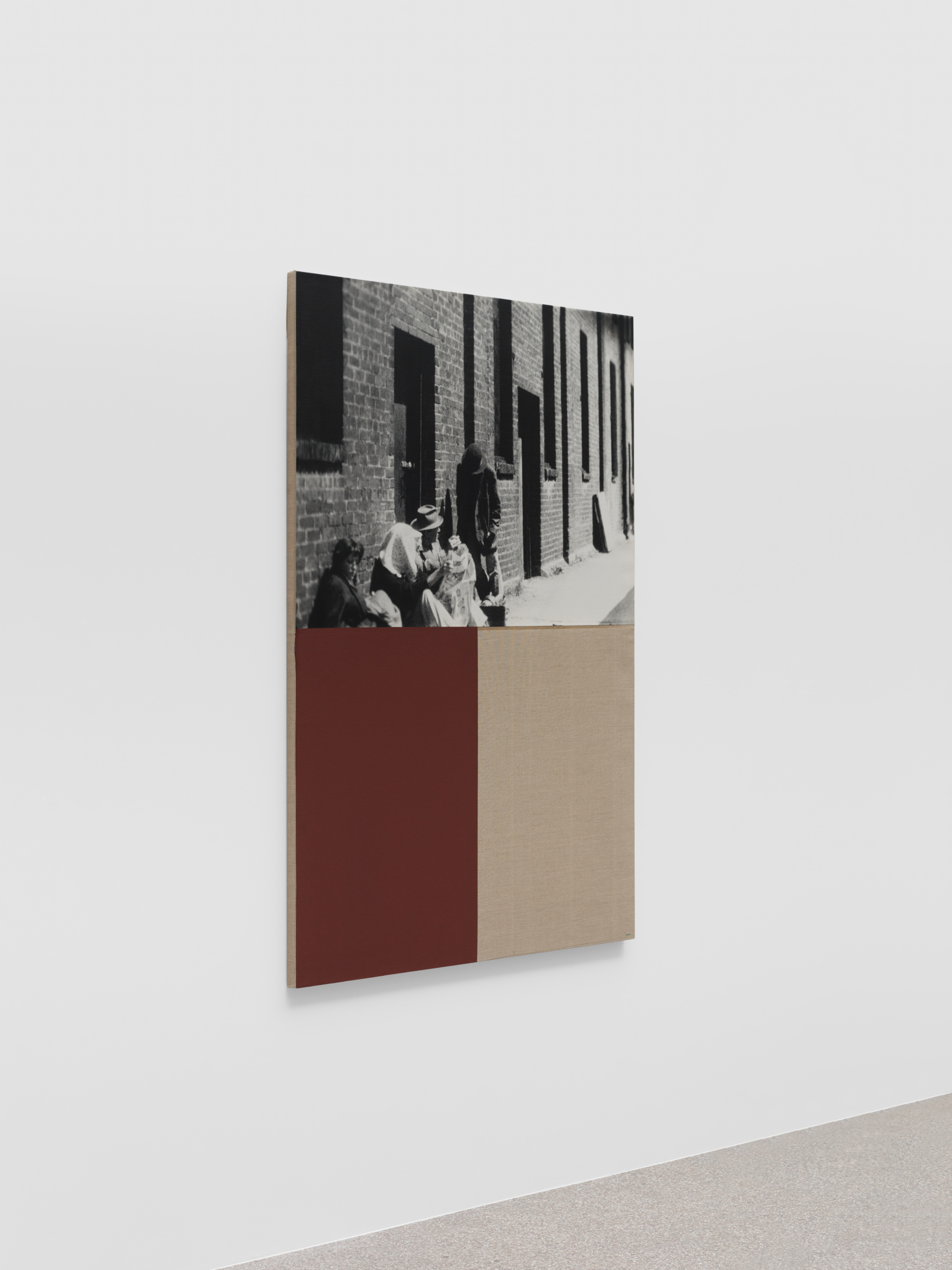
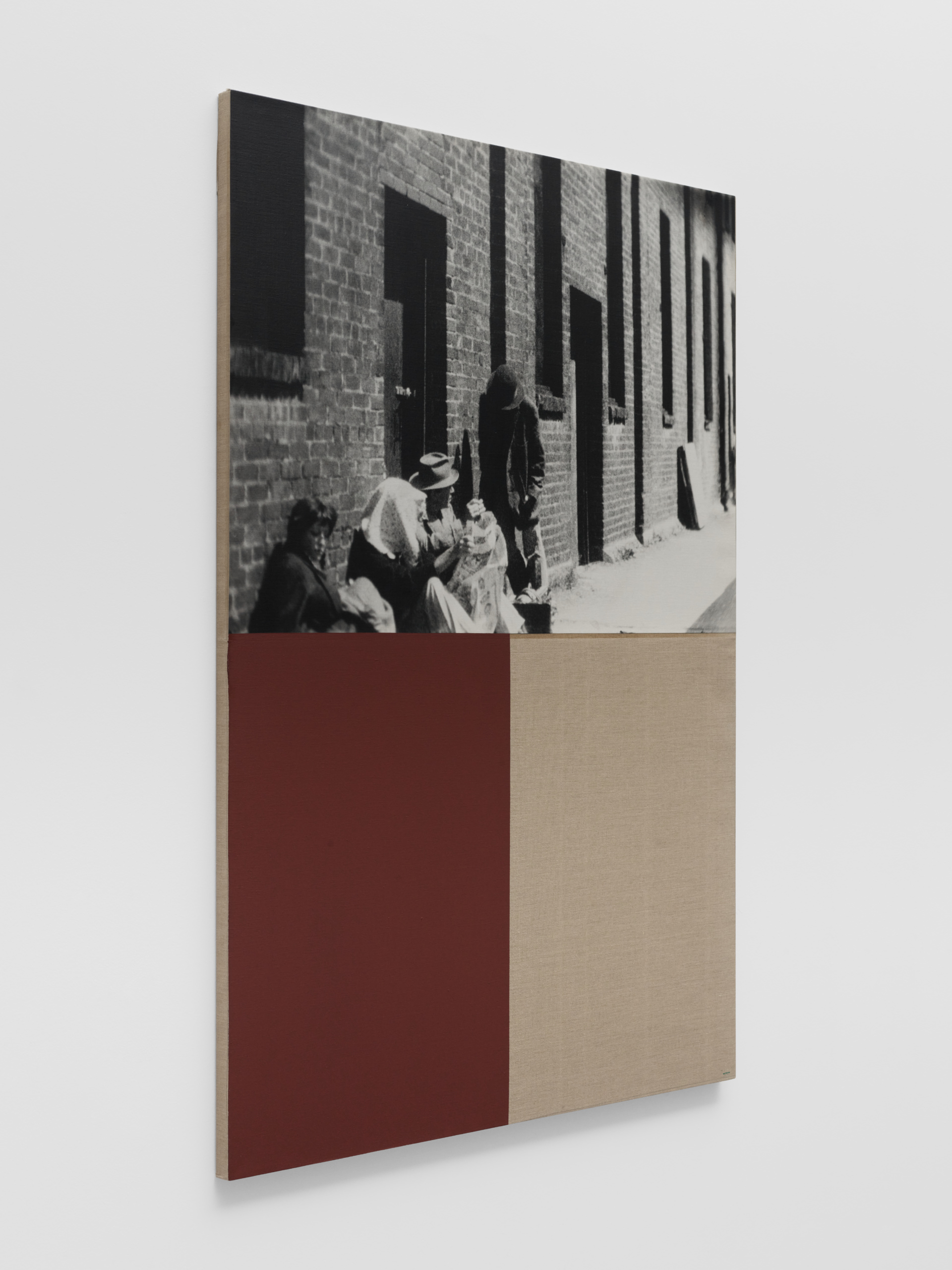
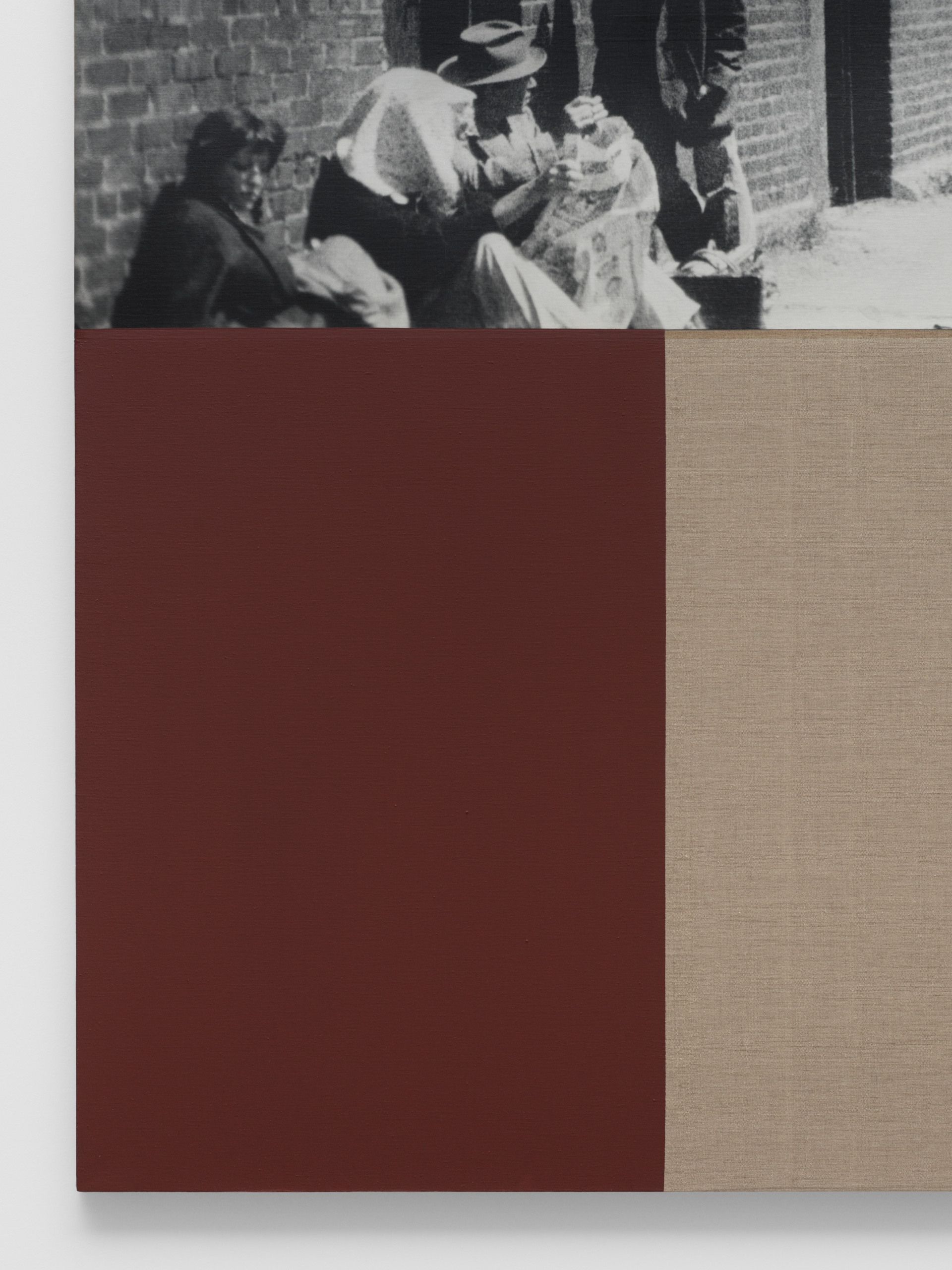
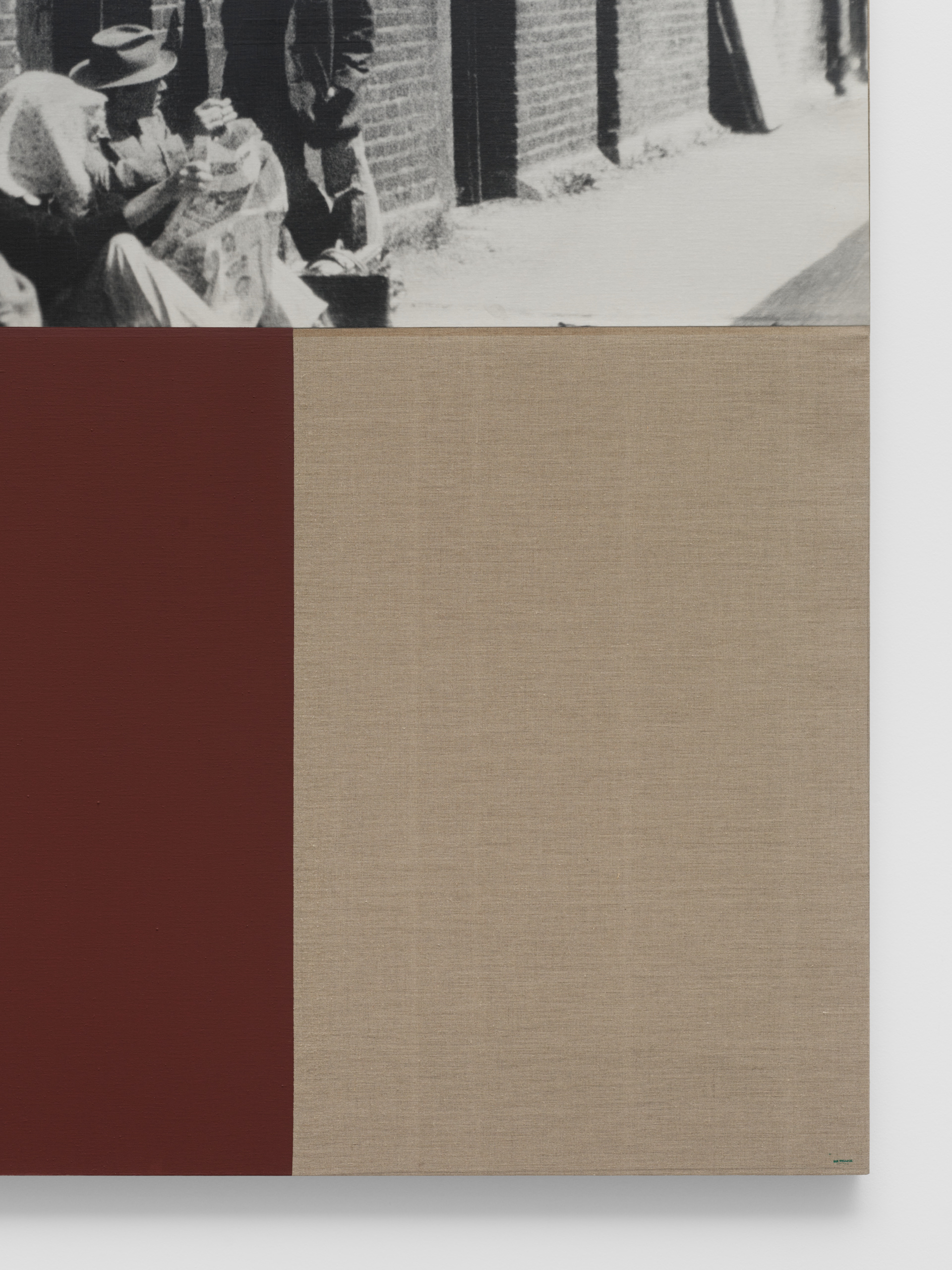
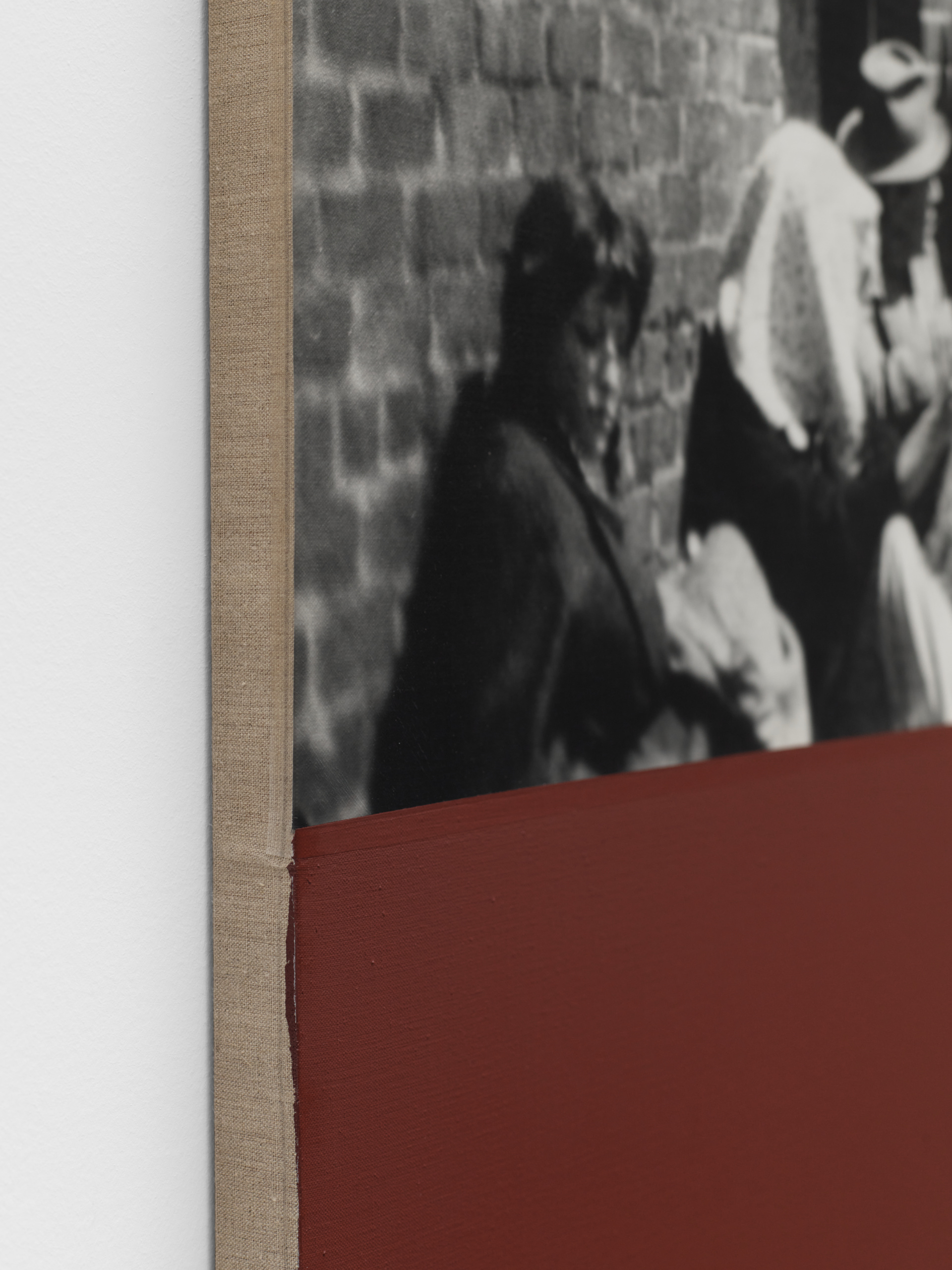
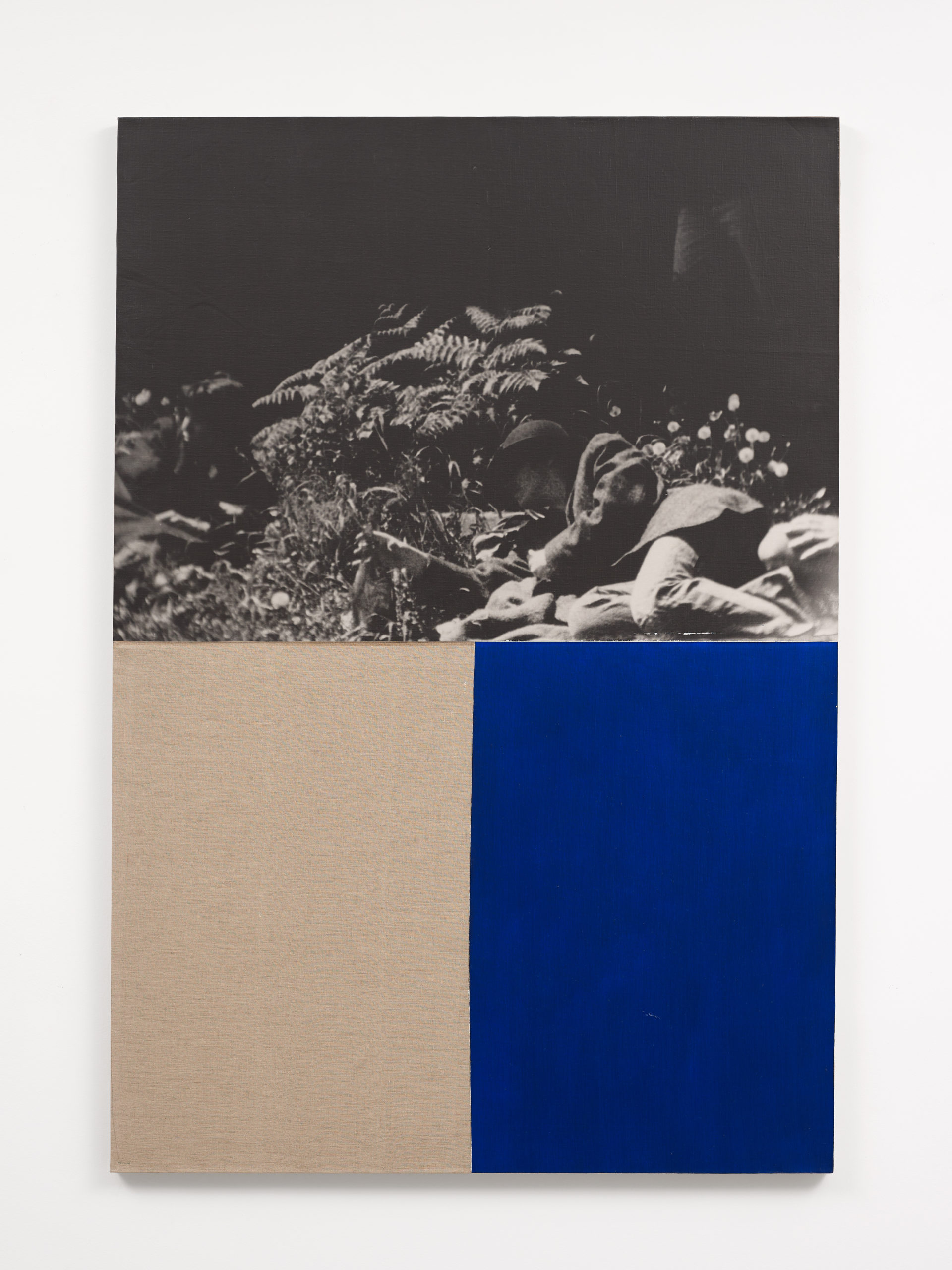
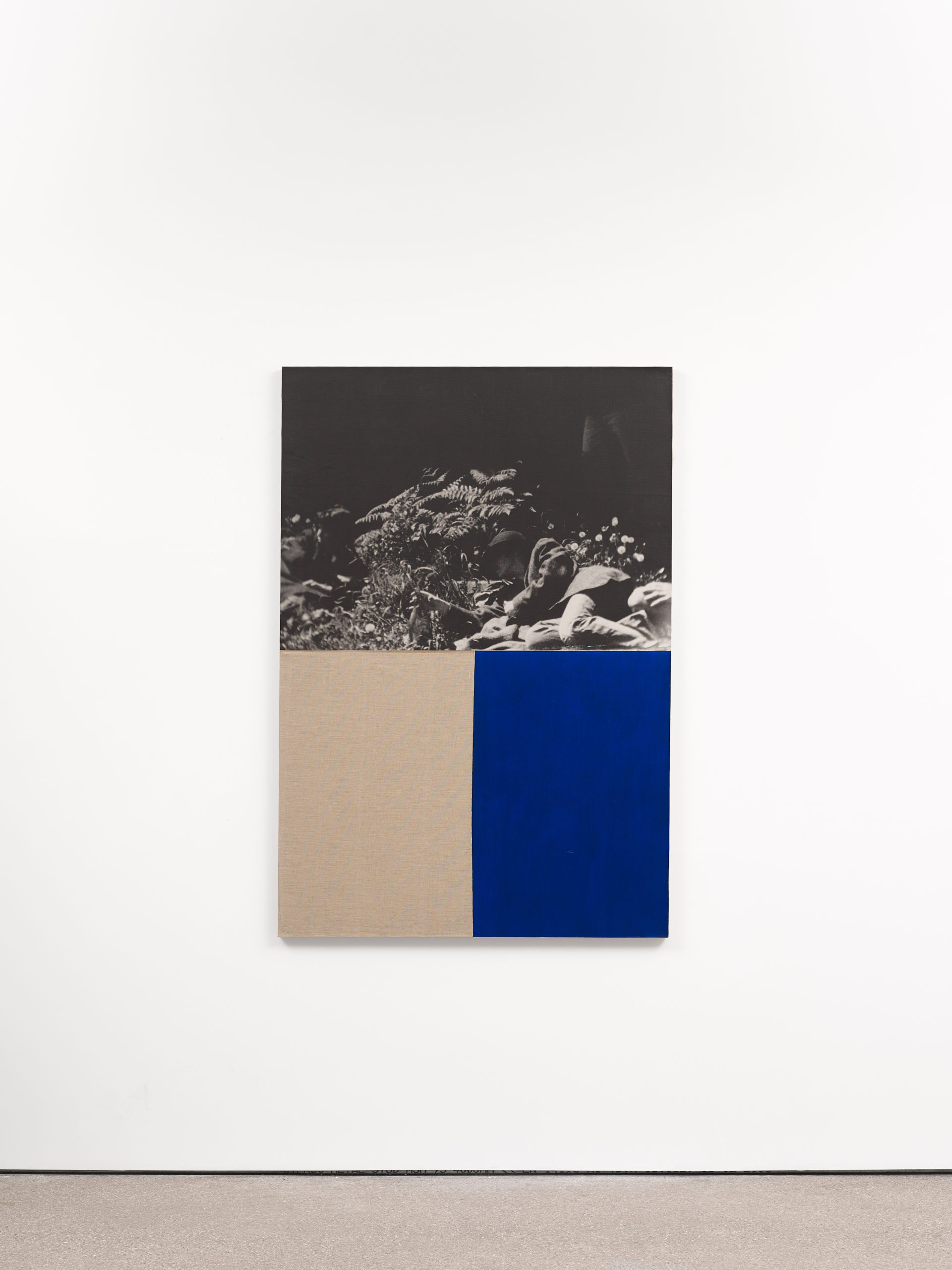
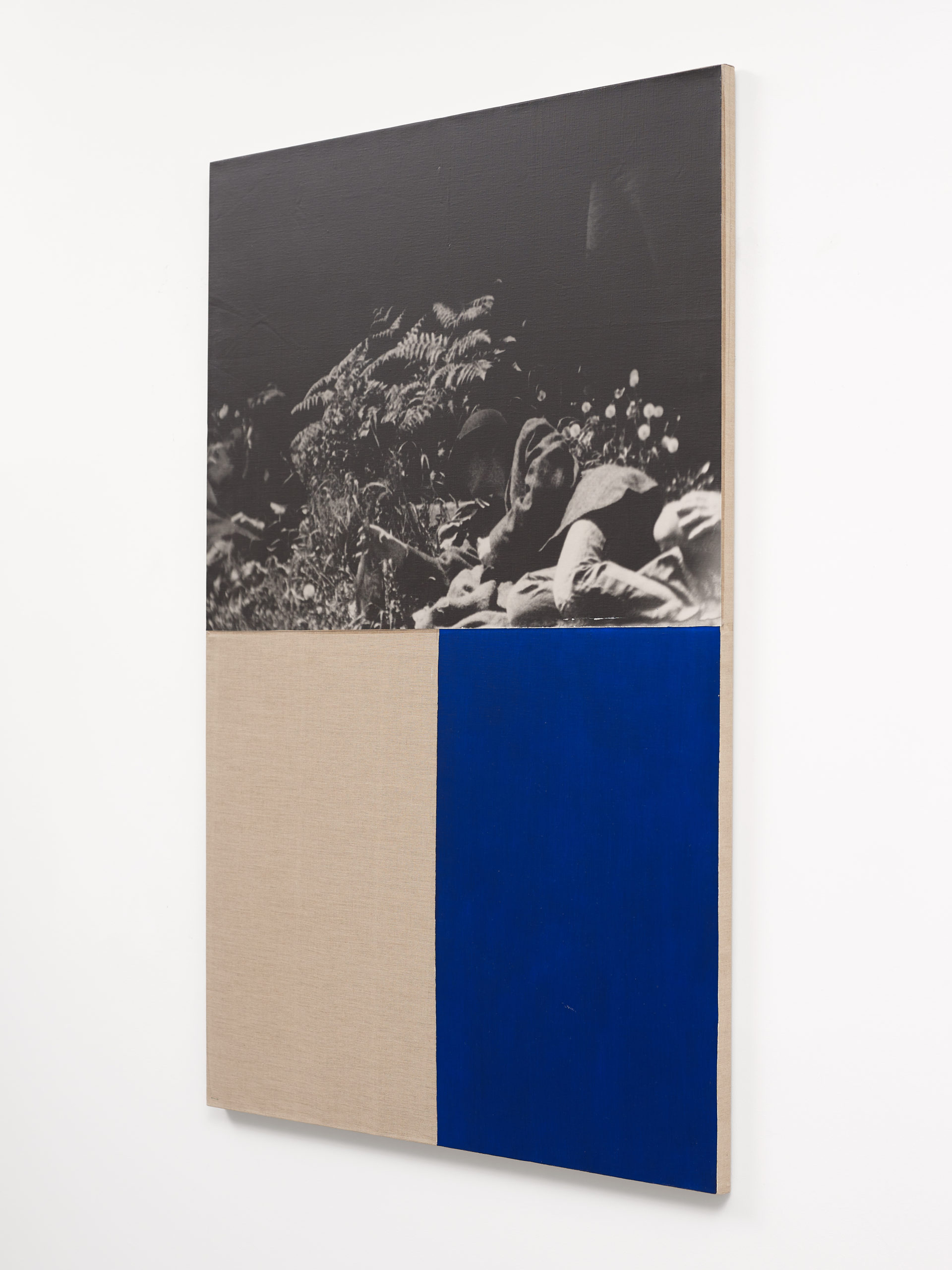
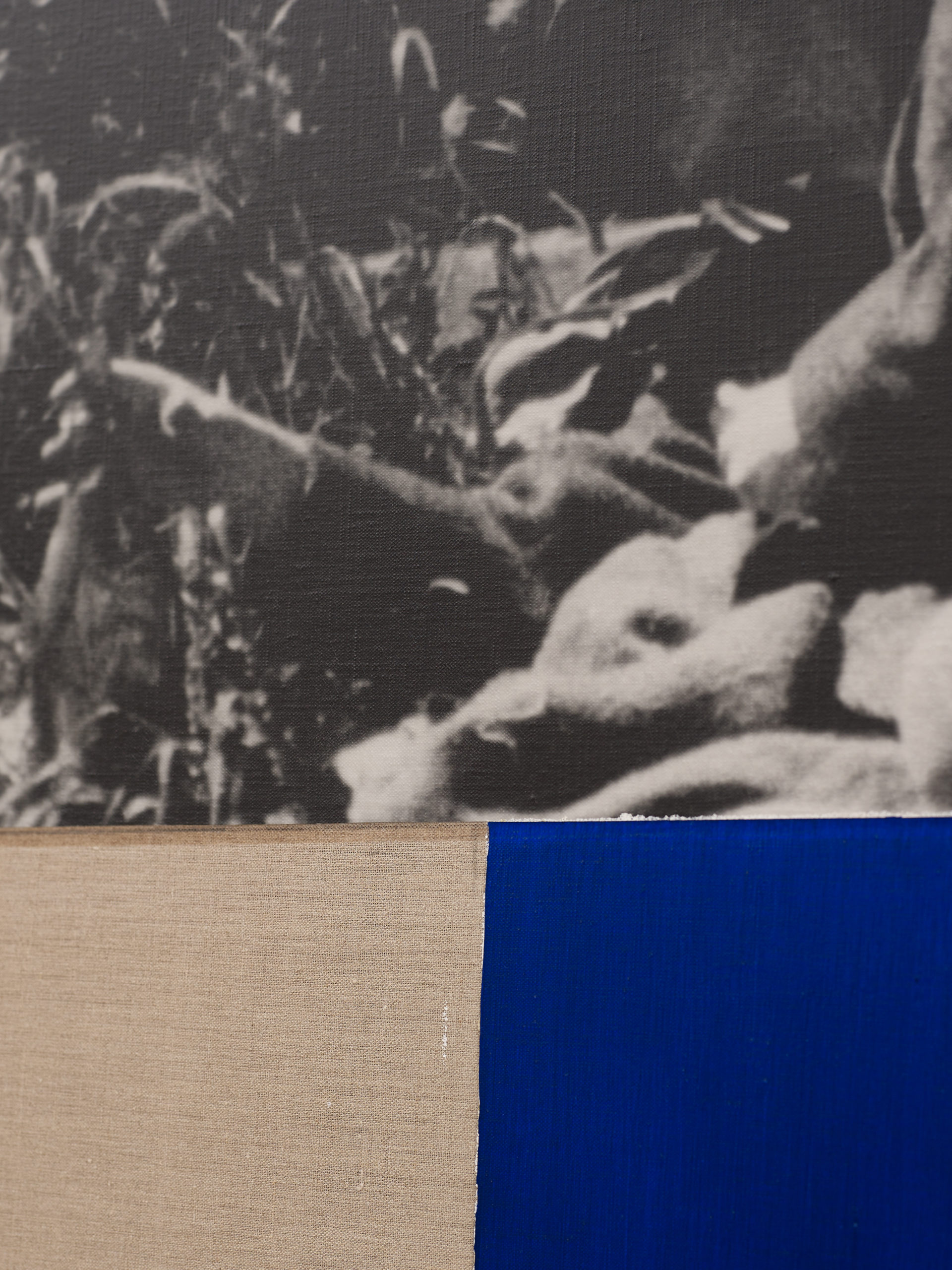
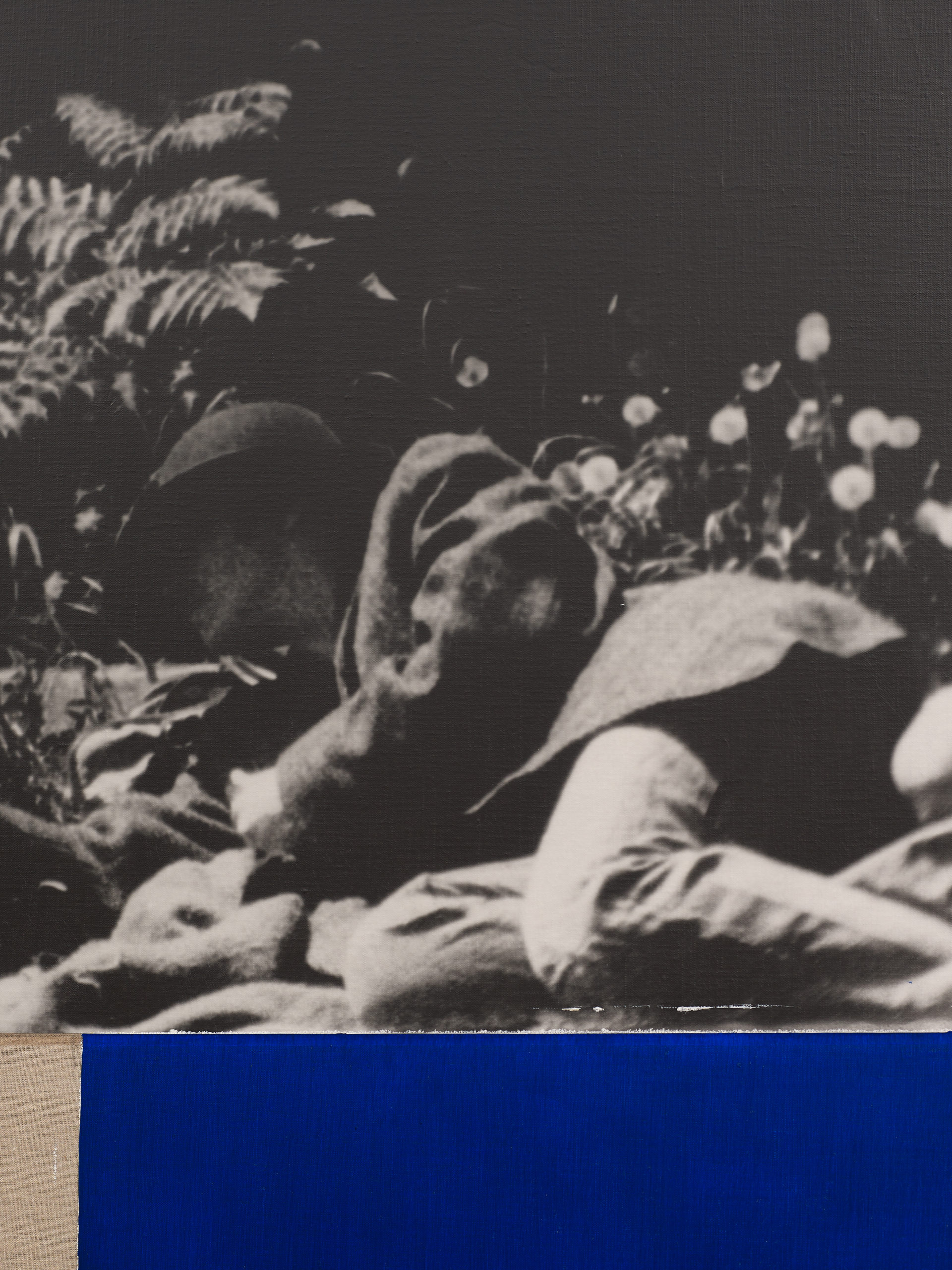
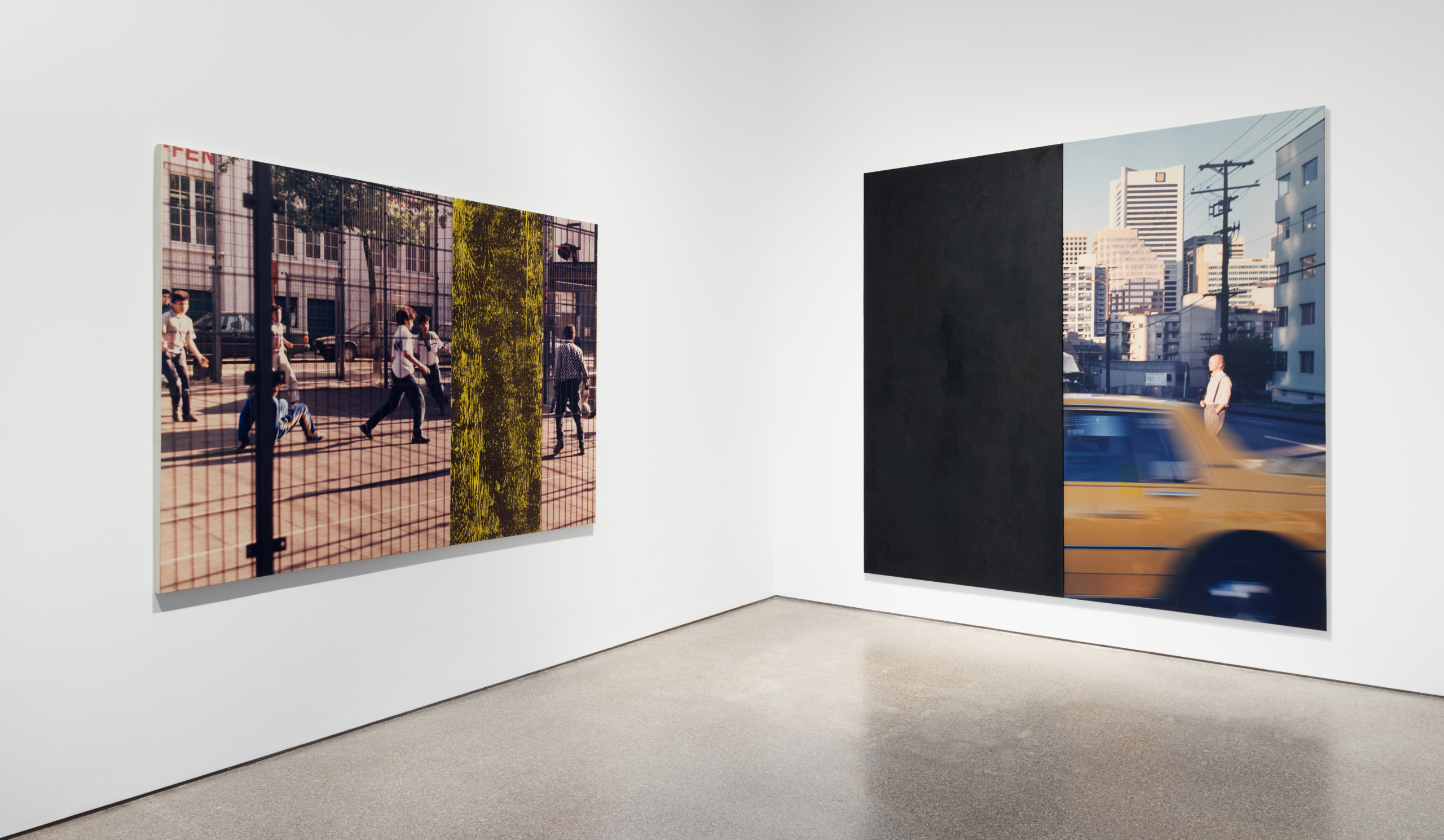
Installation view, OVR Galerie Greta Meert, 2025
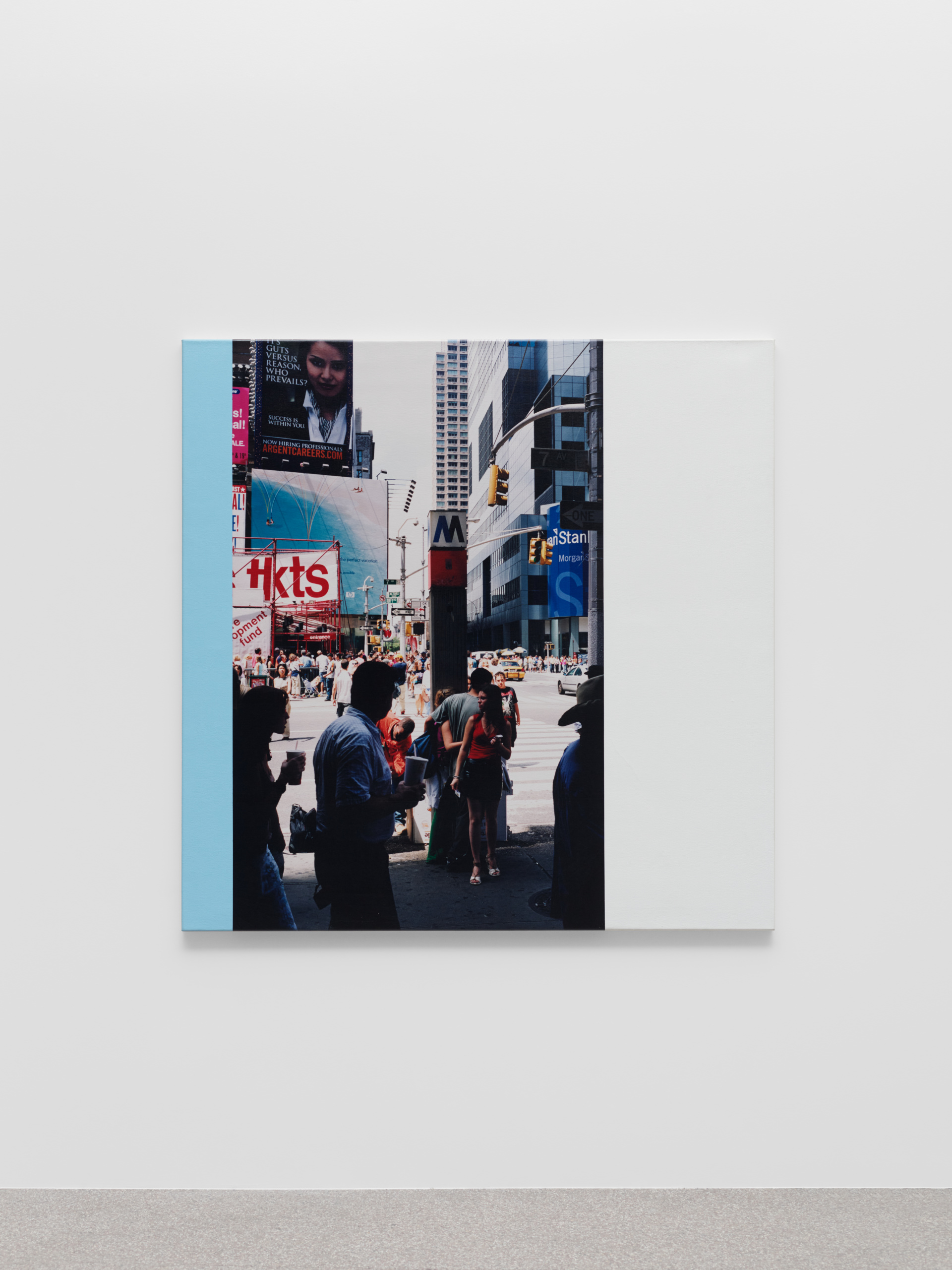
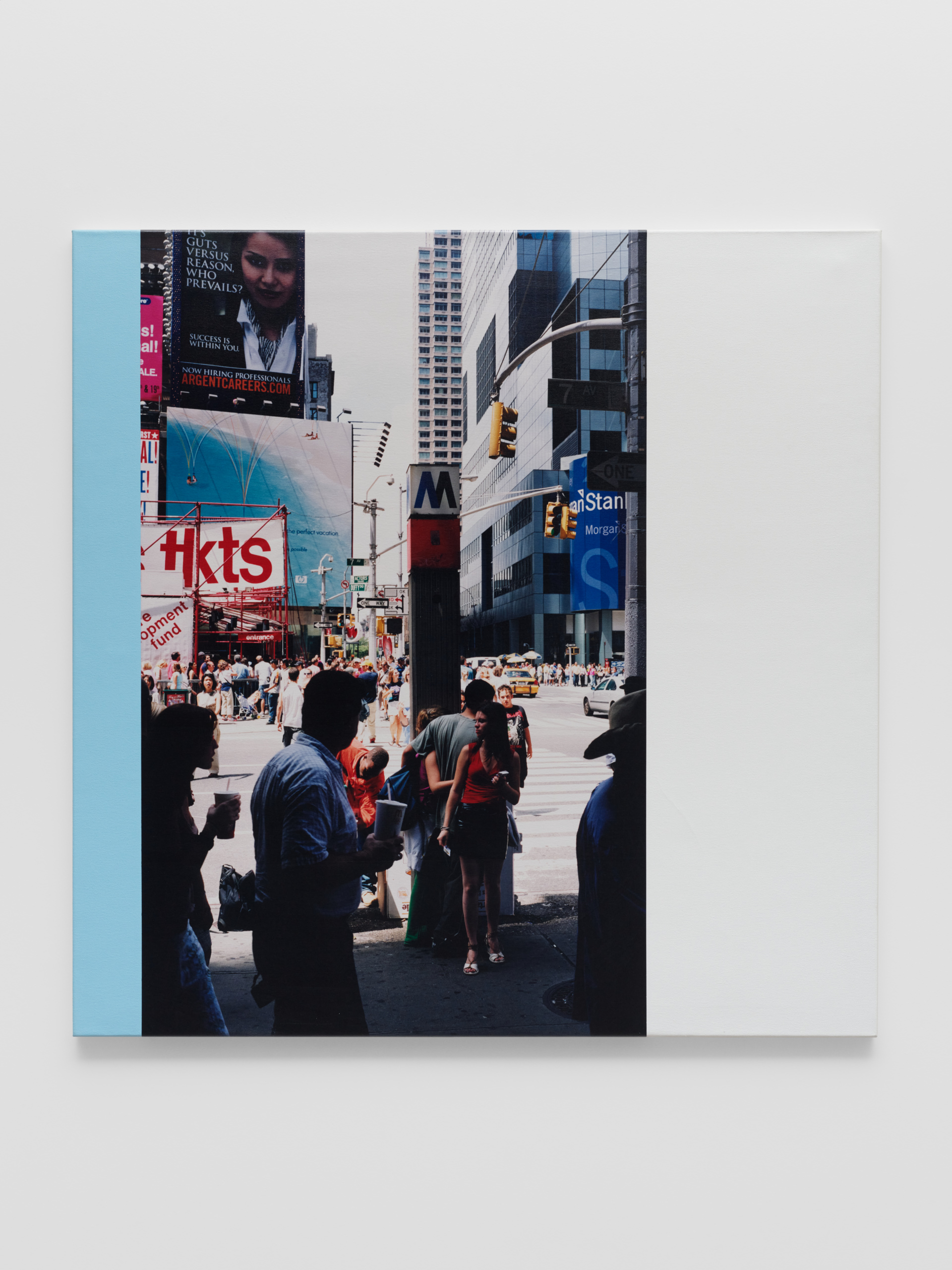
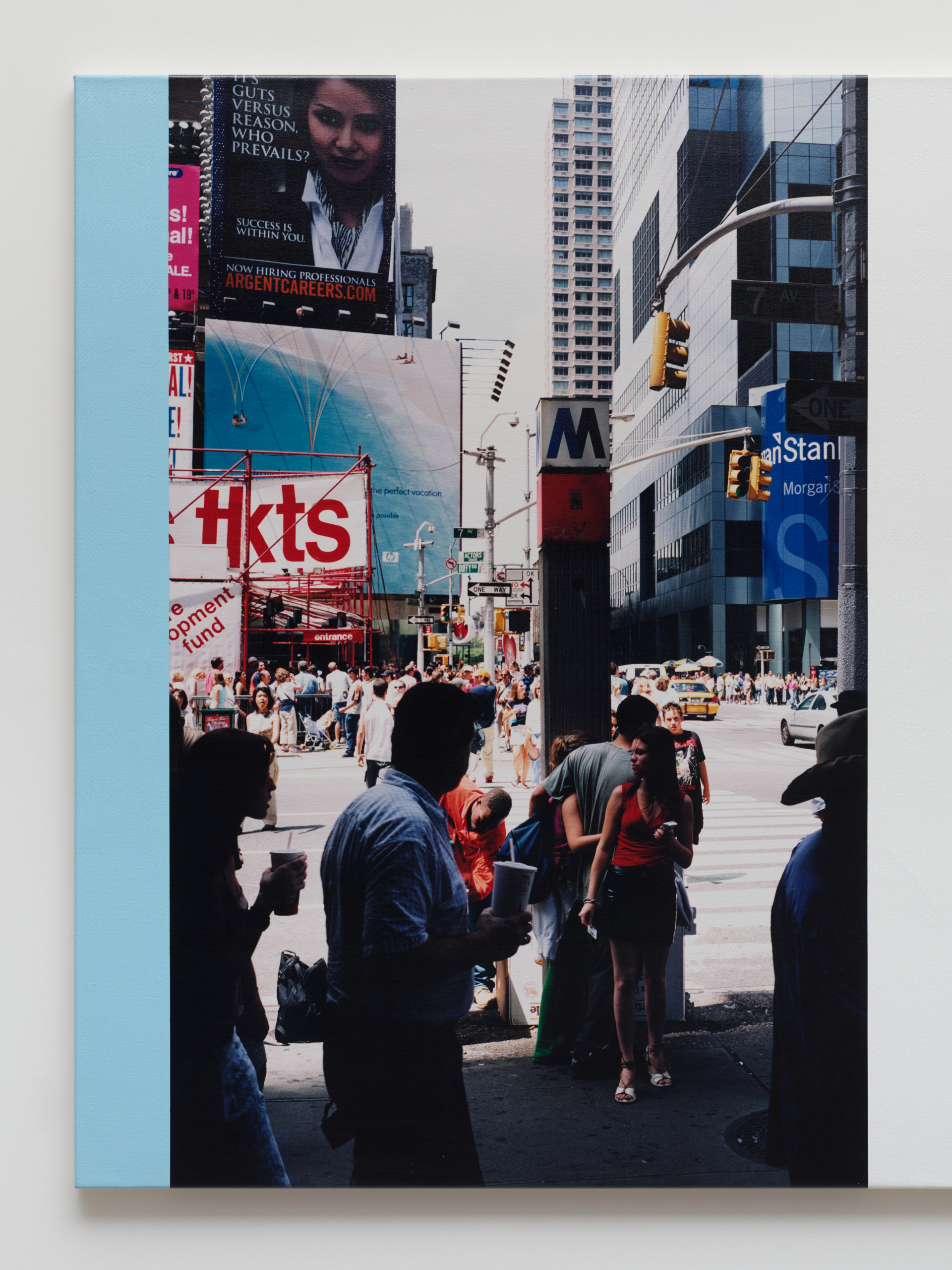
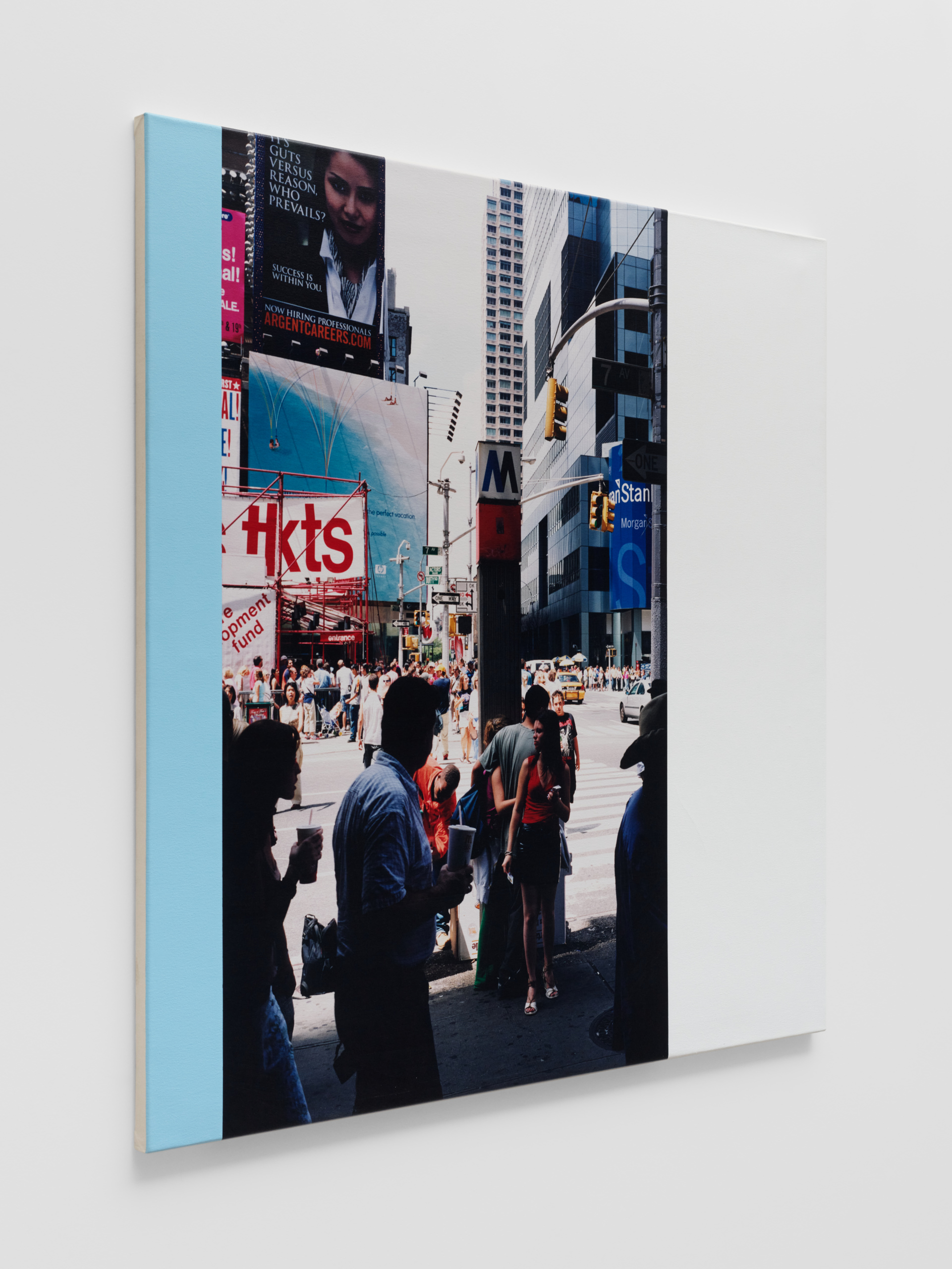
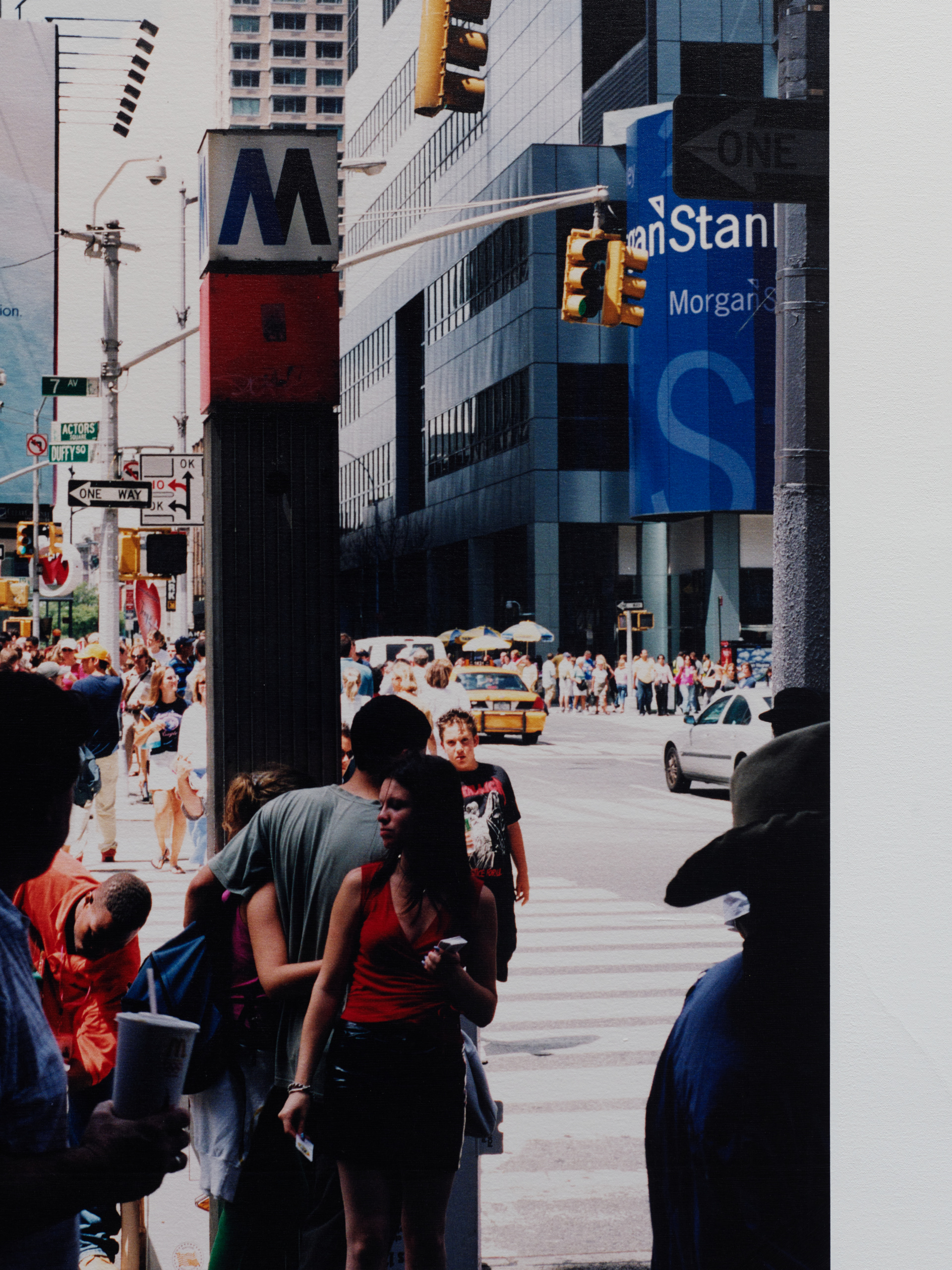

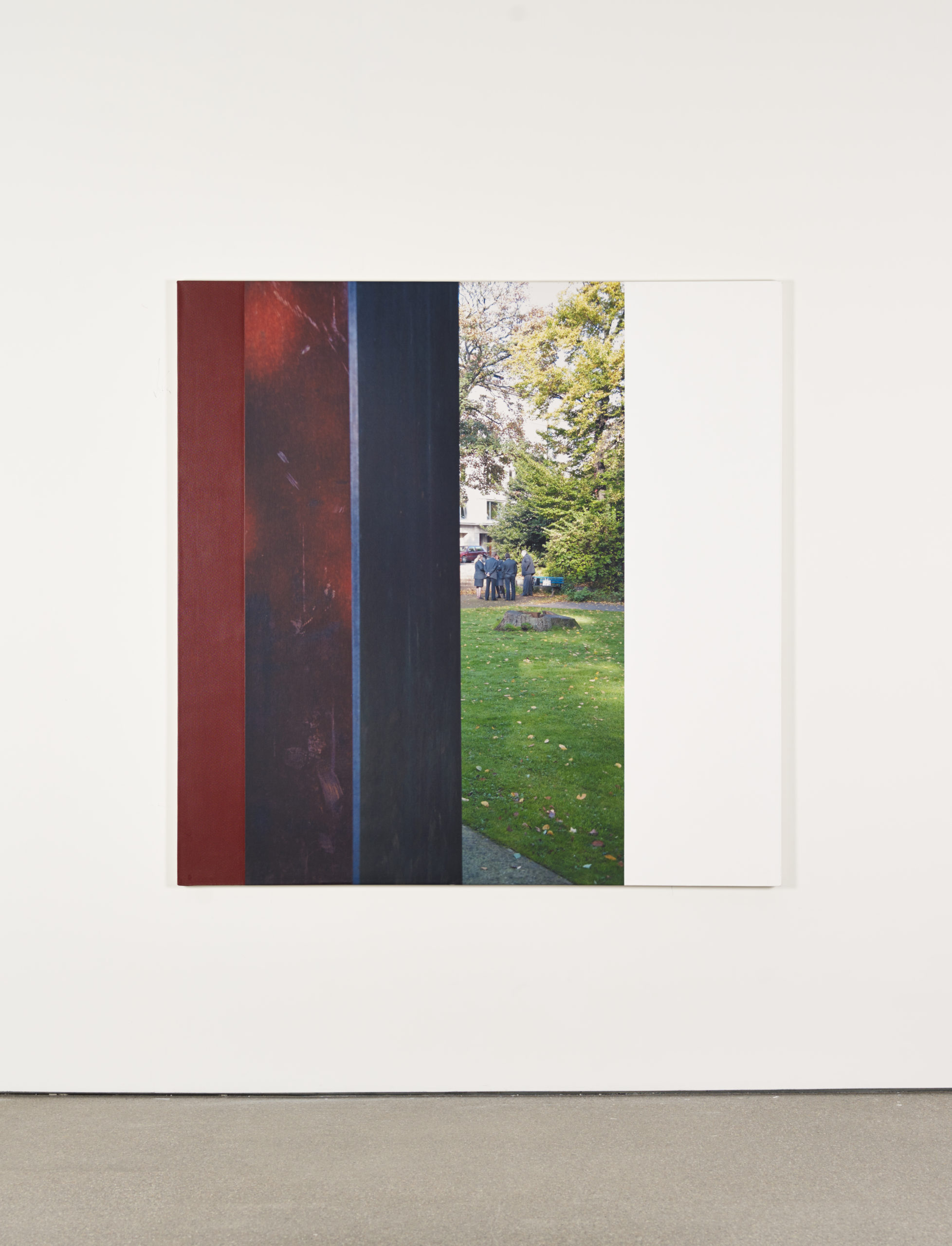
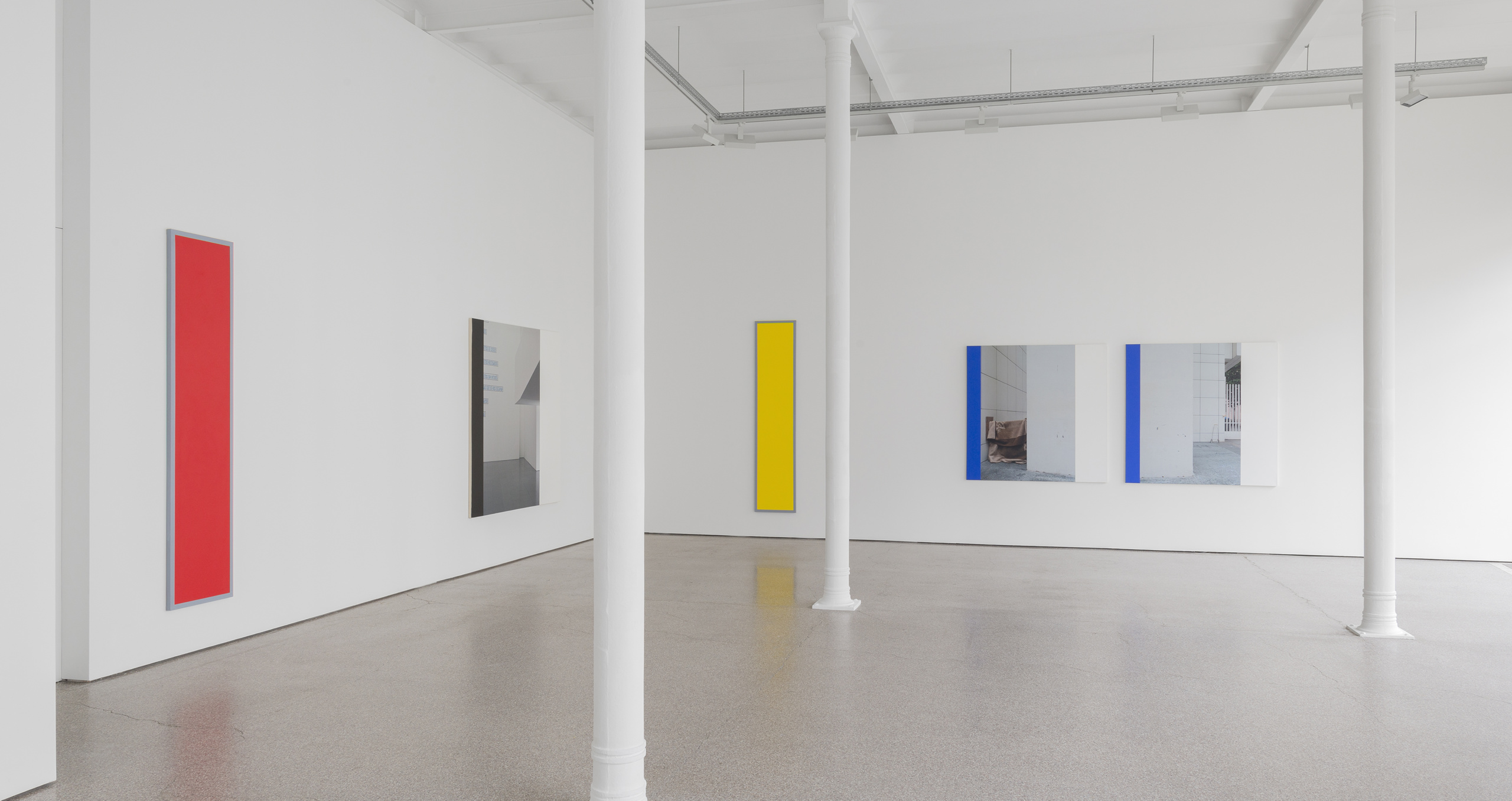
Exhibition view, Ian Wallace, Galerie Greta Meert, 2017
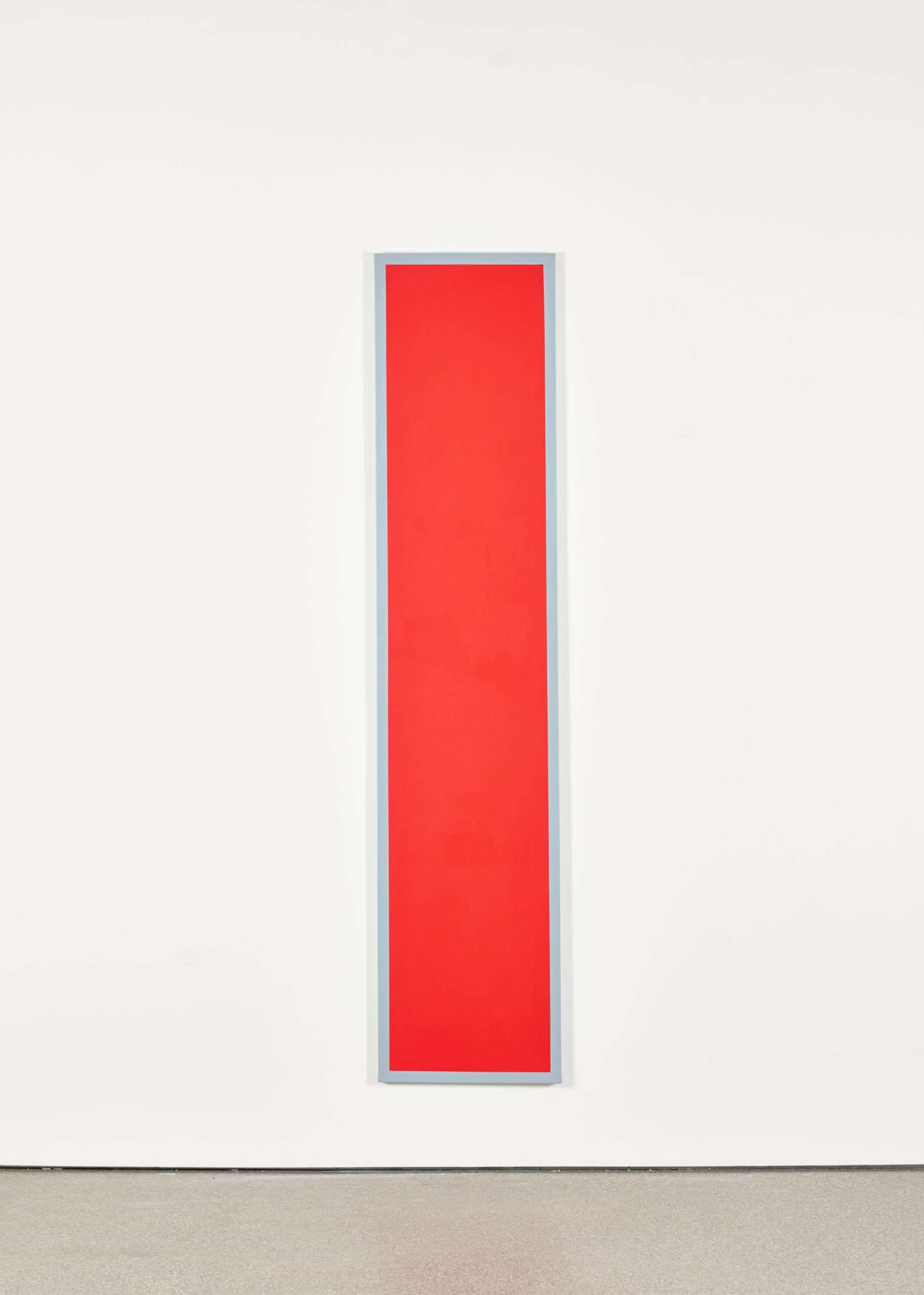
Emerging at a time when modernist painting was undergoing profound theoretical scrutiny, Wallace’s early engagement with the monochrome can be understood as a response to the legacy of formalist abstraction and its perceived exhaustion. By integrating monochrome fields within his photographic tableaux, he disrupts the presumed neutrality of both mediums, foregrounding the tensions between visual presence and conceptual absence, materiality and referentiality. The monochrome, in this context, is not merely a reduction to the purely optical but an assertion of what Wallace has described as “the objectification of pure presence”, a gesture that simultaneously acknowledges the historical weight of modernist painting while destabilising its claims to self-sufficiency.
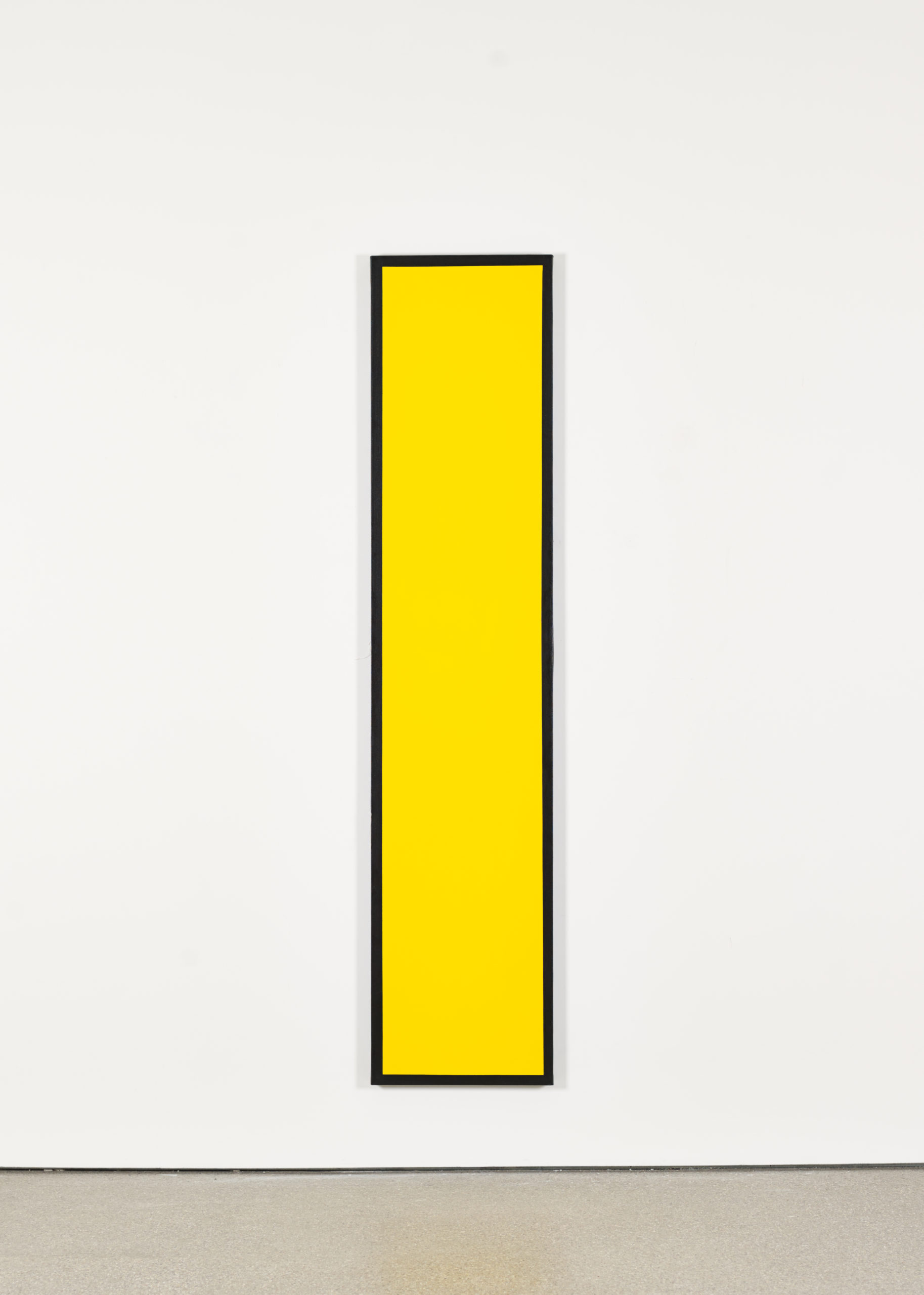
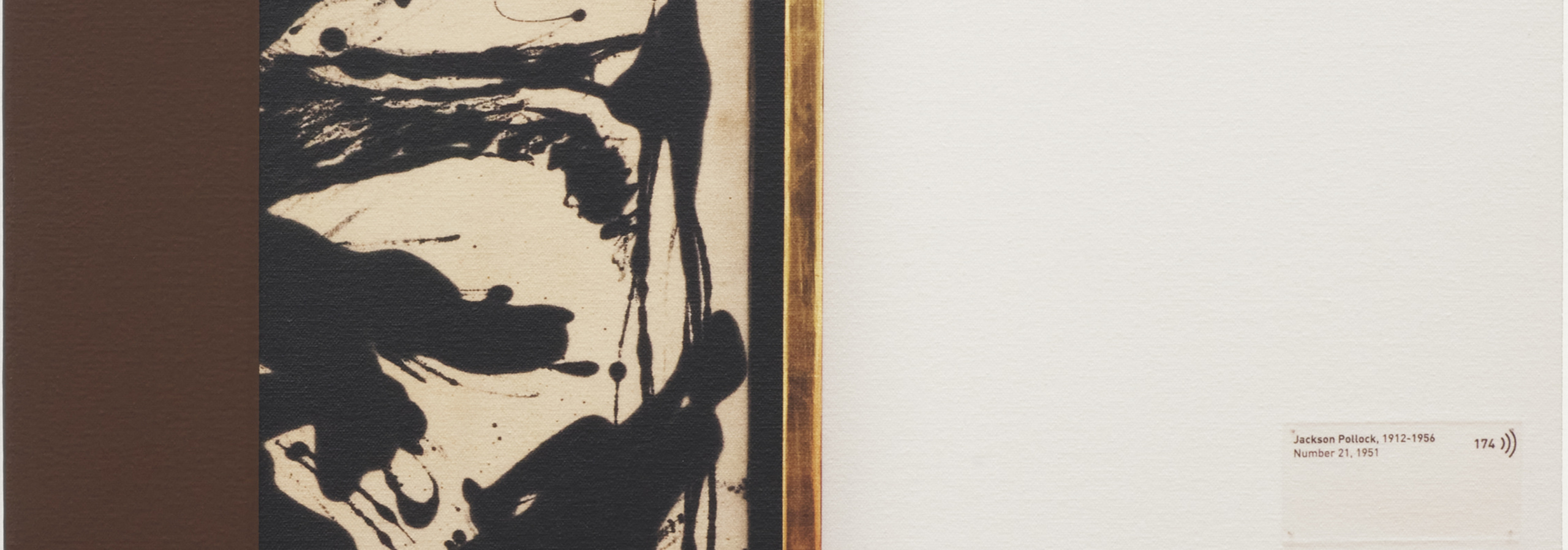
Ian Wallace, Abstract Composition (with Pollock Number 21), 2012 ⎯ detail
Ian Wallace’s Abstract Composition series, scrutinising the institutional and philosophical dimensions of art, attests his commitments to aesthetics of modernism, and to critical theorist Theodor Adorno, whose work Aesthetic Theory occupies a central place in both the artist’s personal library and thought. Literal or evoked imagery of the museum resonates as both physical and conceptual space throughout his oeuvre, situating it within a dialogue on the role of institutions in shaping cultural meaning and value.
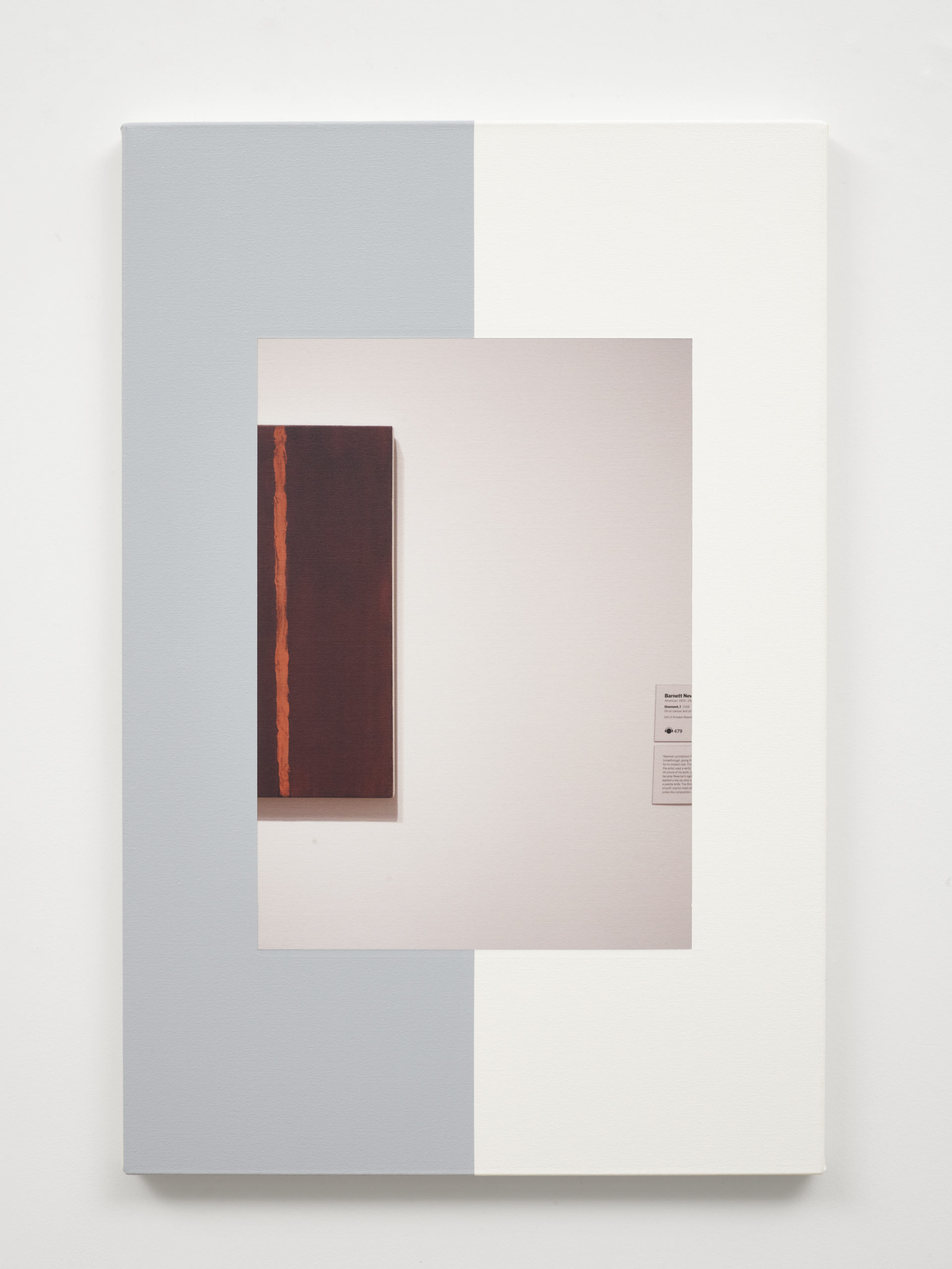
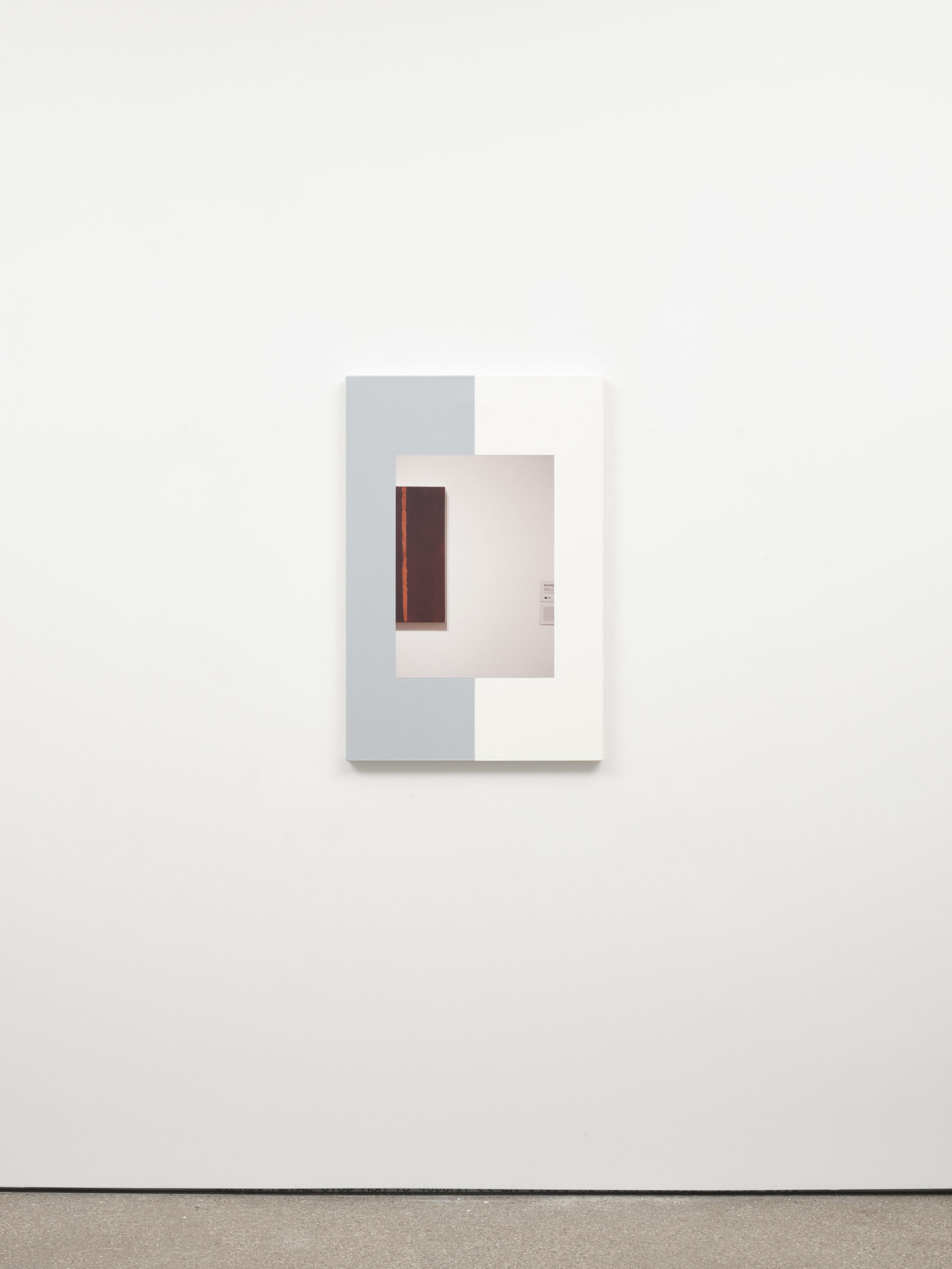
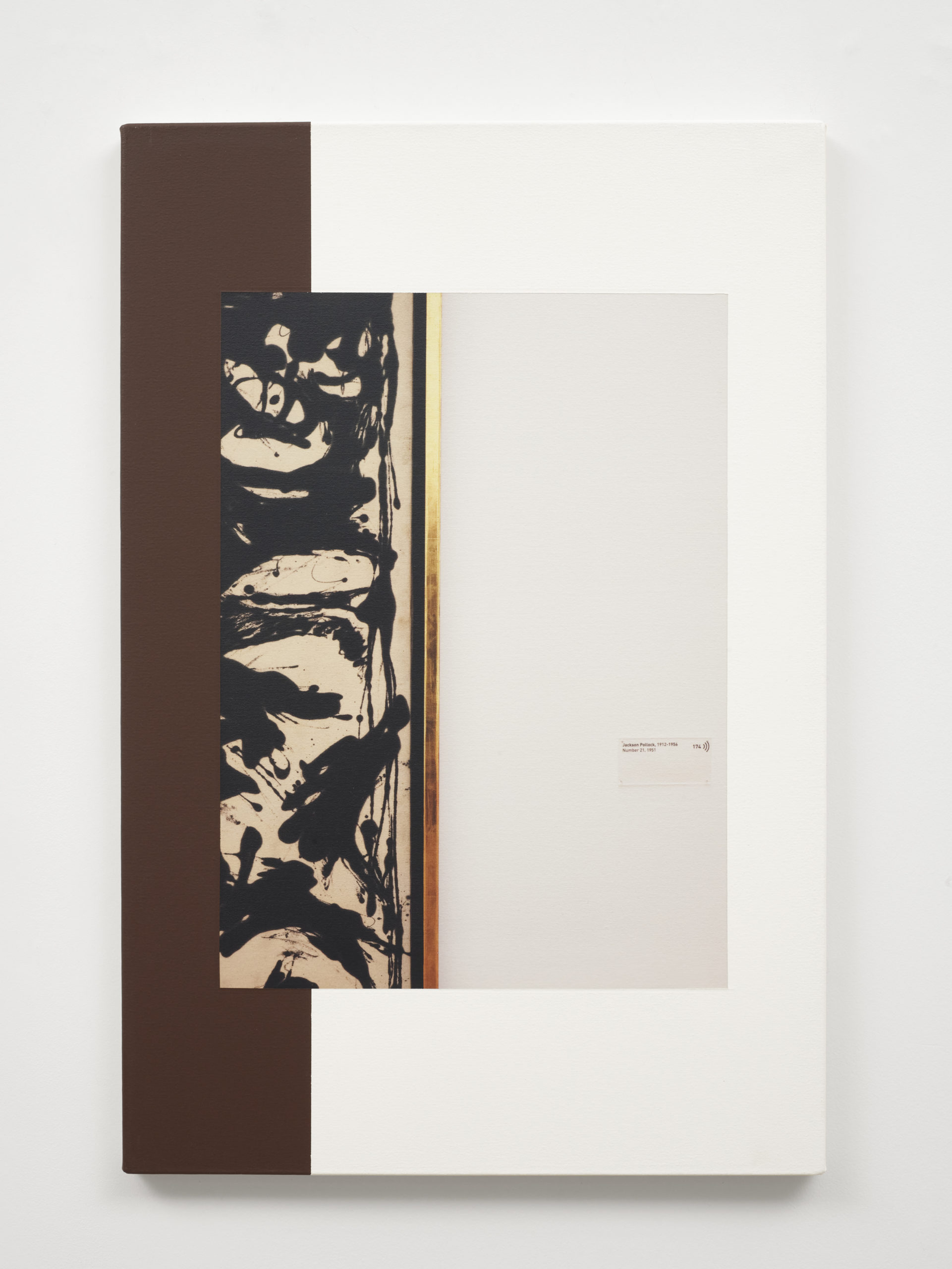
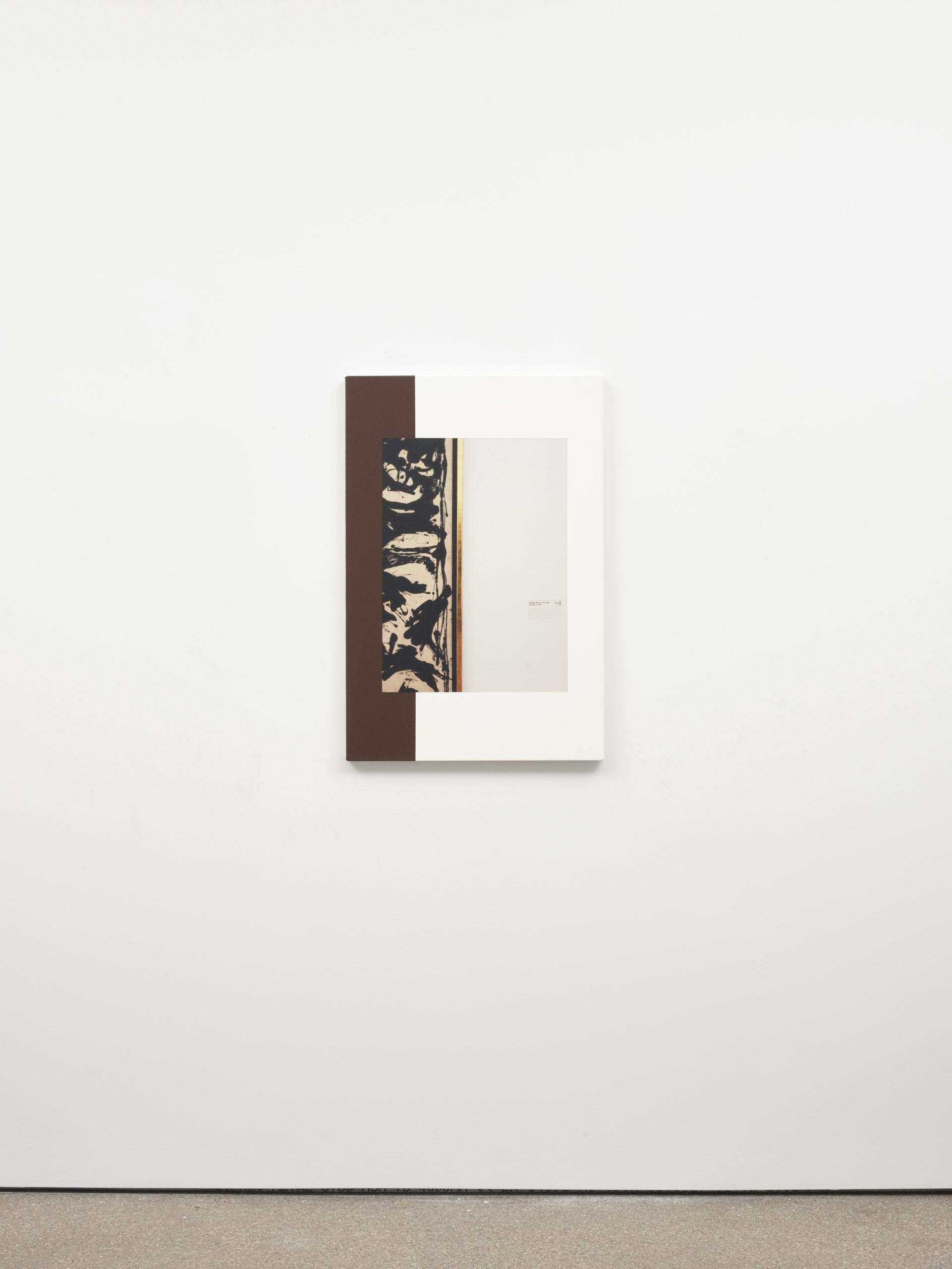
The Abstract Composition series exemplifies Wallace’s signature approach of combining photographic elements with abstract painting, taking and decontextualising images of museum – interiors, artworks, or archival materials – underlining a tension between representation and autonomy, and invites viewers to question the authority of this institution in its roles of mediating the visual experience and defining artistic value.
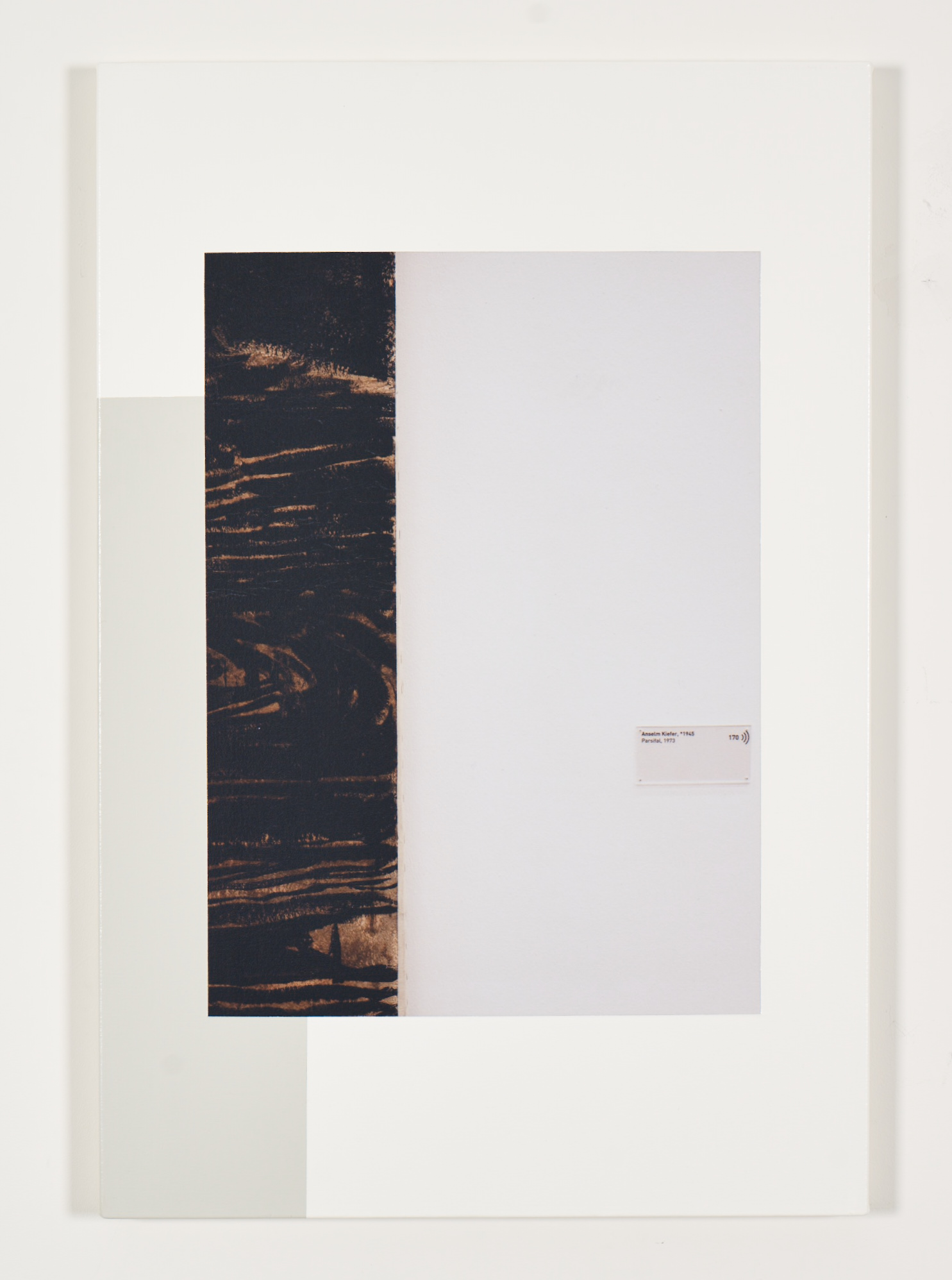
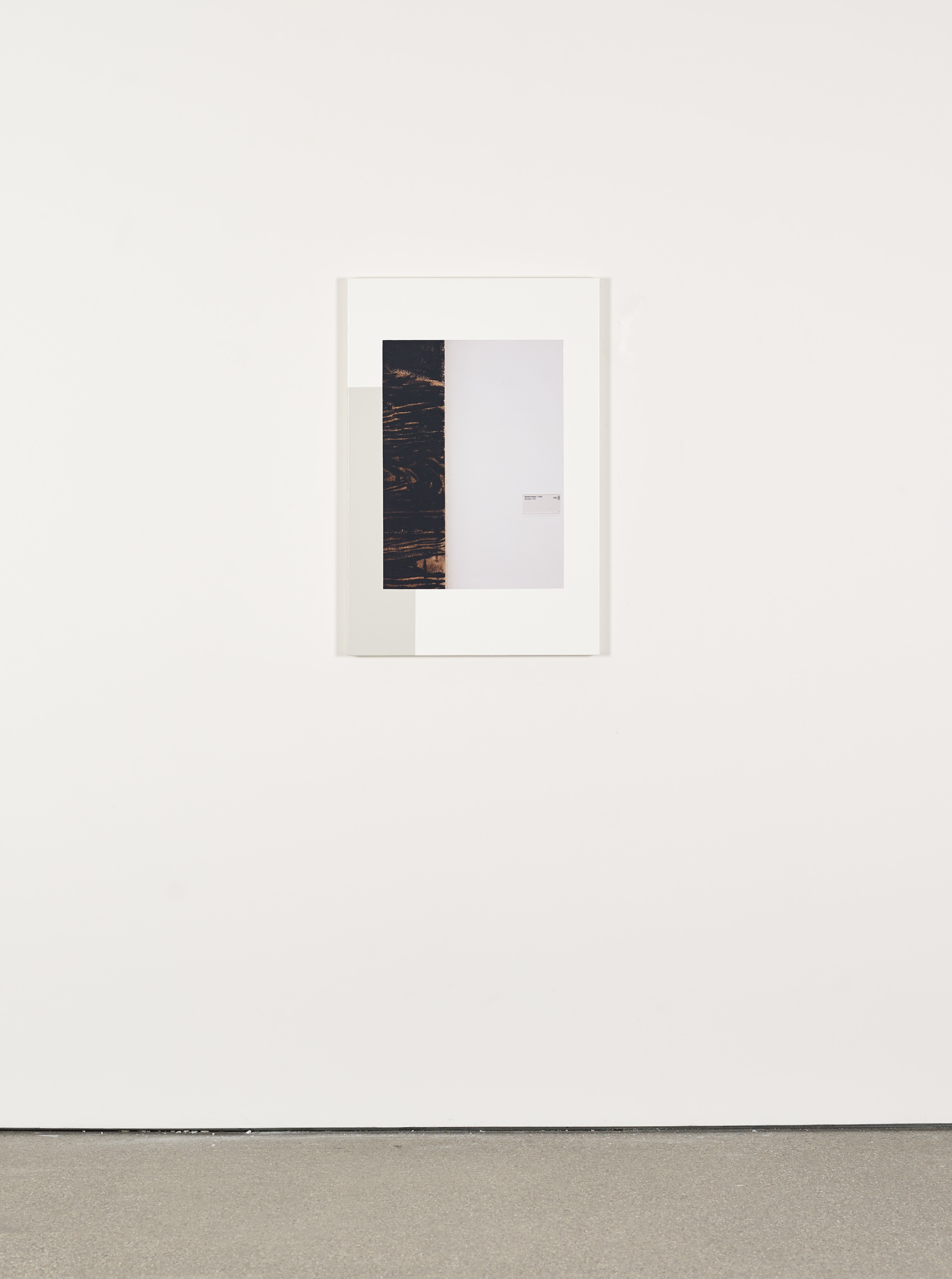
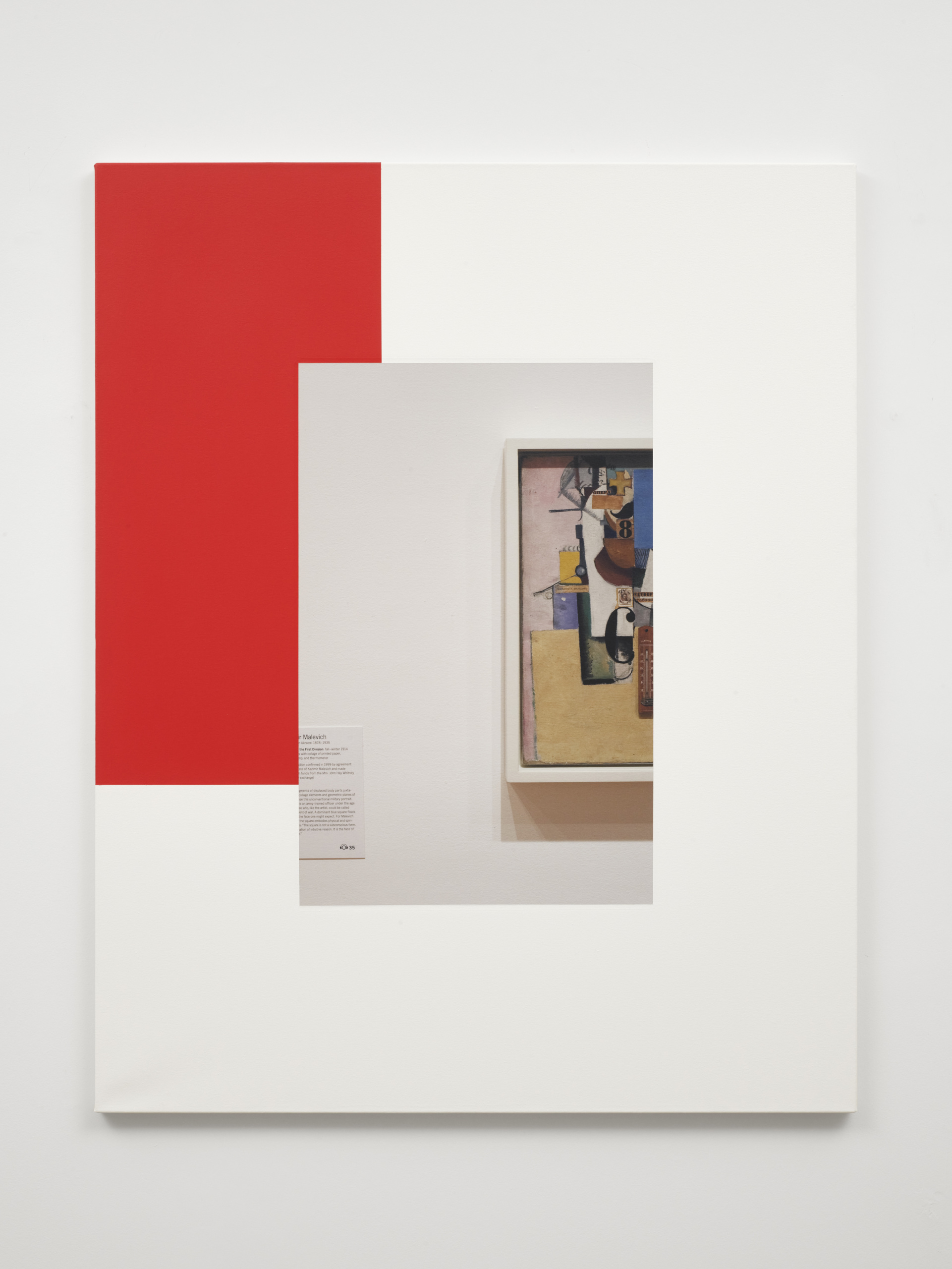
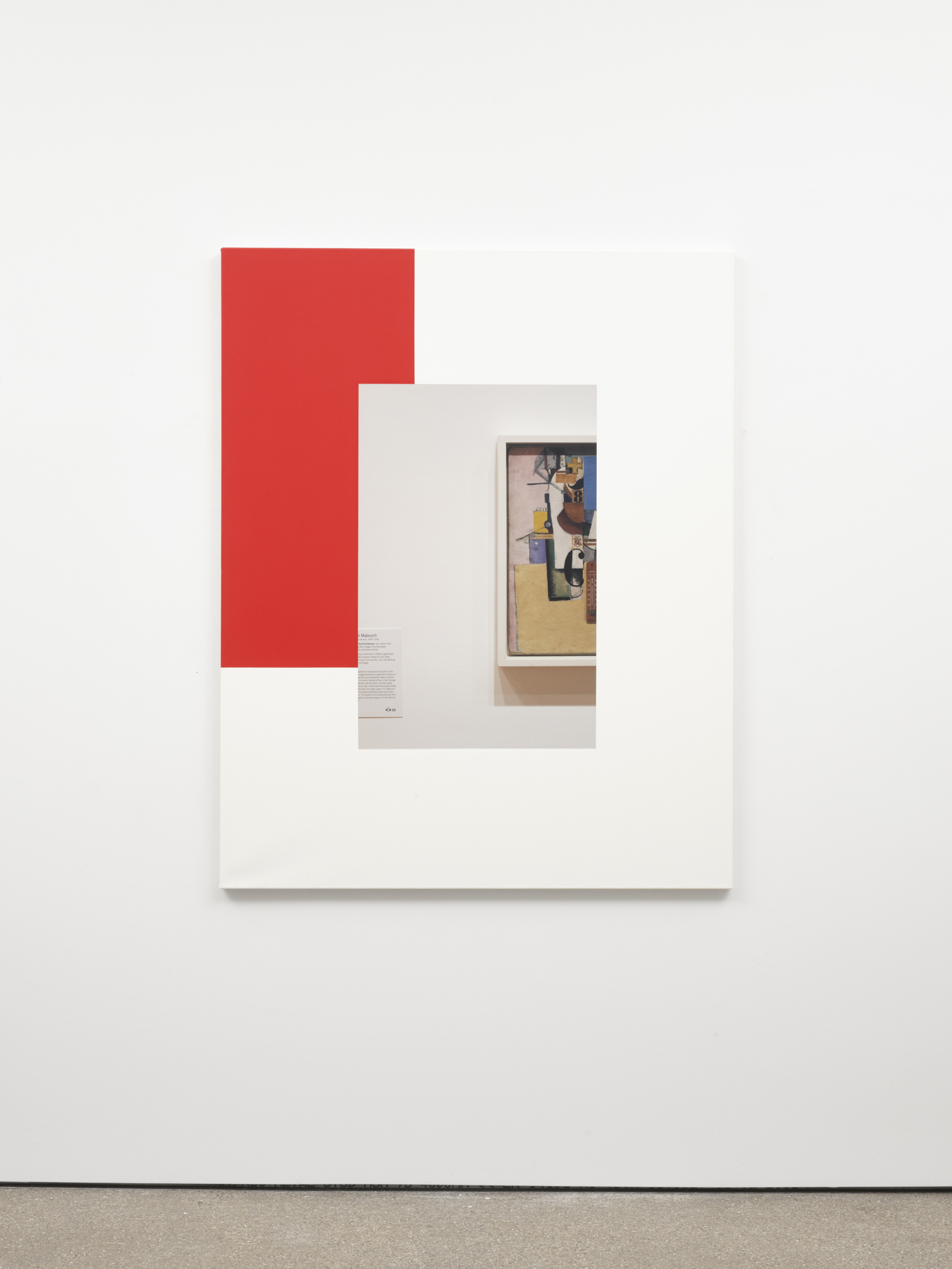
Wallaces work challenges the hierarchies and ideologies that underpin the art world, implicitly affirming the potential of art to critique and transform society. Through his innovative use of form and his intellectual rigour, Wallace continues to push the boundaries of contemporary art, offering a compelling vision of art’s role in the modern world.
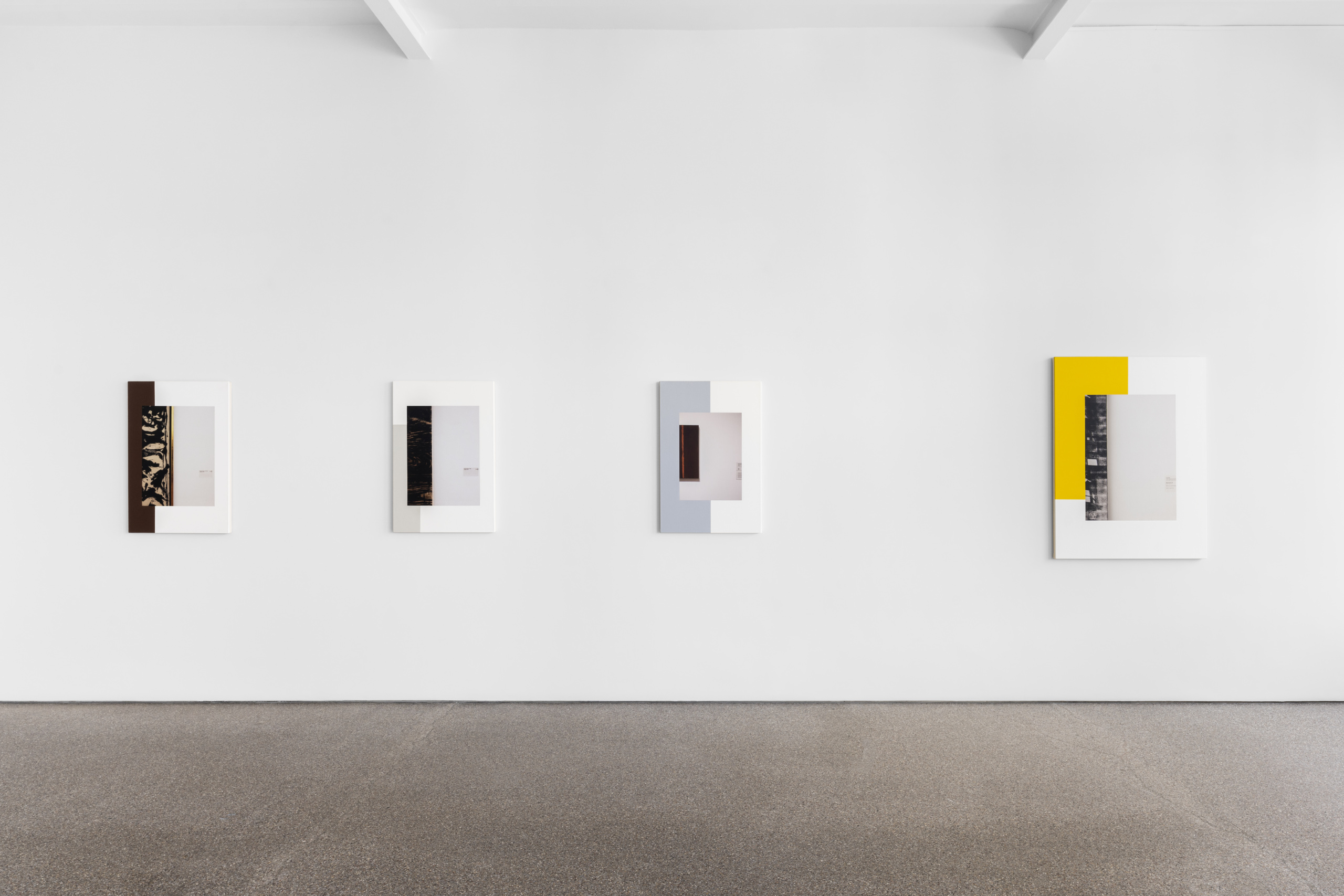
Exhibition view, Ian Wallace ⏤ In the Museum, Galerie Greta Meert, 2022
Ian Wallace’s institutional significance is firmly established through both his extensive museum presence and a series of prestigious accolades, reflecting his profound impact on contemporary art. Over the decades, Wallace’s work has been prominently featured in major exhibitions at leading institutions, including the Museum of Modern Art (MoMA) in New York, the Tate Modern in London, and the National Gallery of Canada, solidifying his role as a central figure in the global art discourse. His integration of photography and painting, alongside his critical engagement with urban and institutional spaces, has made his work a cornerstone of conceptual art.
Wallace was granted in 2004 with the Governor General’s Award in Visual and Media Arts, Canada’s highest honour for artistic achievement. In December 2012 he was appointment as an Officer of the Order of Canada, the nation’s second-highest merit tribute, underscoring his enduring influence on Canadian cultural discourse. In 2014, his international stature was affirmed with the title of Chevalier de L’Ordre des Arts et des Lettres from the French Ministry of Culture, highlighting his global contributions to art, literature and critical theory. Finally, in 2016, his induction into the Royal Canadian Academy of Arts cemented his legacy as a transformative figure in the visual arts.
Wallace’s influence is evident not only in his own body of work but also in his contributions as an educator, writer, and intellectual, shaping generations of artists and thinkers. His theoretical grounding, particularly in relation to critical theory and modernist aesthetics, continues to inform contemporary discussions on the role of the image, the institution, and the function of art in society. As a result, his work remains a touchstone for critical reflection, bridging historical inquiry with ongoing explorations of visual culture in the 21st century.
Wallace was granted in 2004 with the Governor General’s Award in Visual and Media Arts, Canada’s highest honour for artistic achievement. In December 2012 he was appointment as an Officer of the Order of Canada, the nation’s second-highest merit tribute, underscoring his enduring influence on Canadian cultural discourse. In 2014, his international stature was affirmed with the title of Chevalier de L’Ordre des Arts et des Lettres from the French Ministry of Culture, highlighting his global contributions to art, literature and critical theory. Finally, in 2016, his induction into the Royal Canadian Academy of Arts cemented his legacy as a transformative figure in the visual arts.
Wallace’s influence is evident not only in his own body of work but also in his contributions as an educator, writer, and intellectual, shaping generations of artists and thinkers. His theoretical grounding, particularly in relation to critical theory and modernist aesthetics, continues to inform contemporary discussions on the role of the image, the institution, and the function of art in society. As a result, his work remains a touchstone for critical reflection, bridging historical inquiry with ongoing explorations of visual culture in the 21st century.
Audain Price – Ian Wallace, 2022
